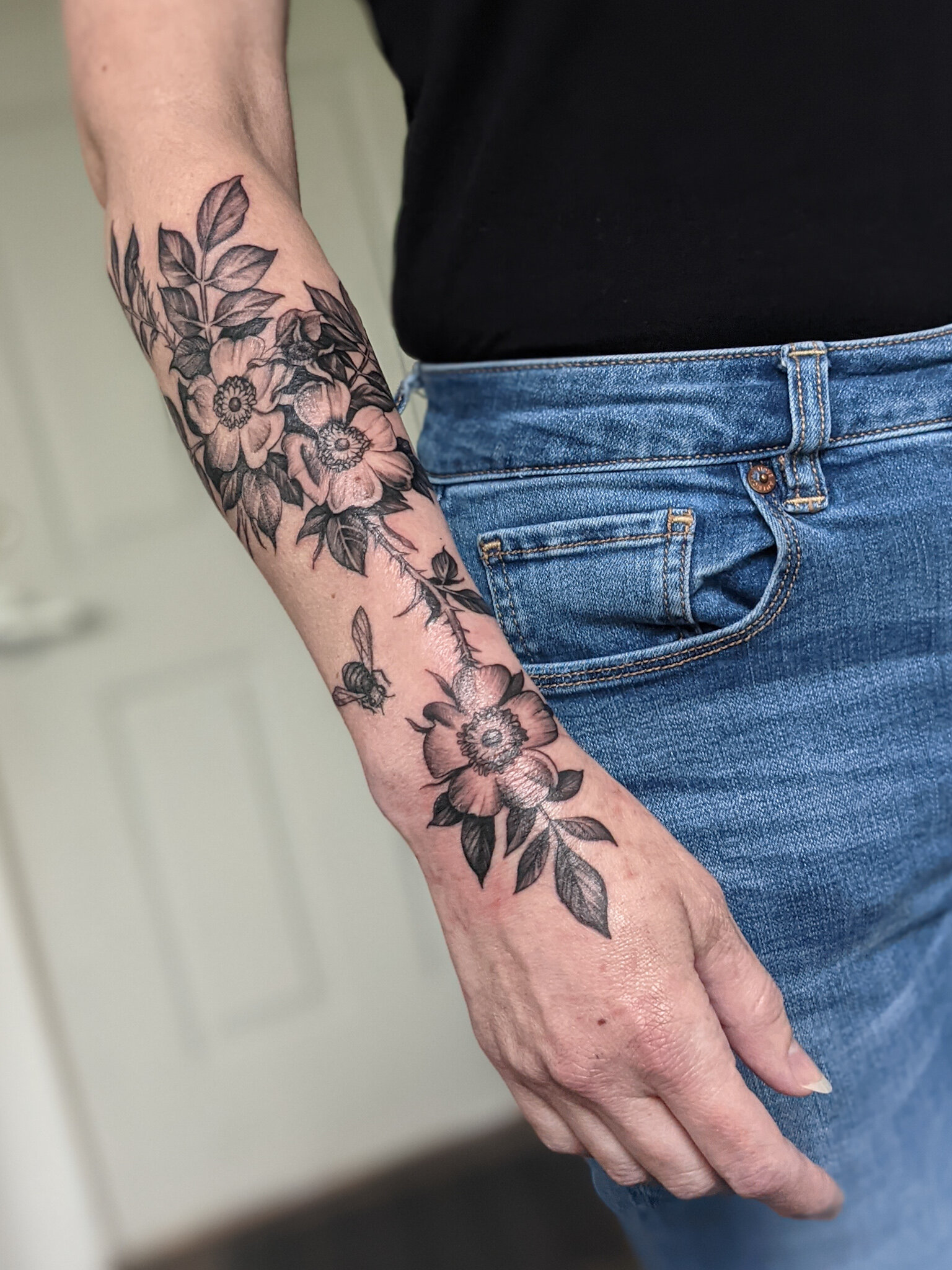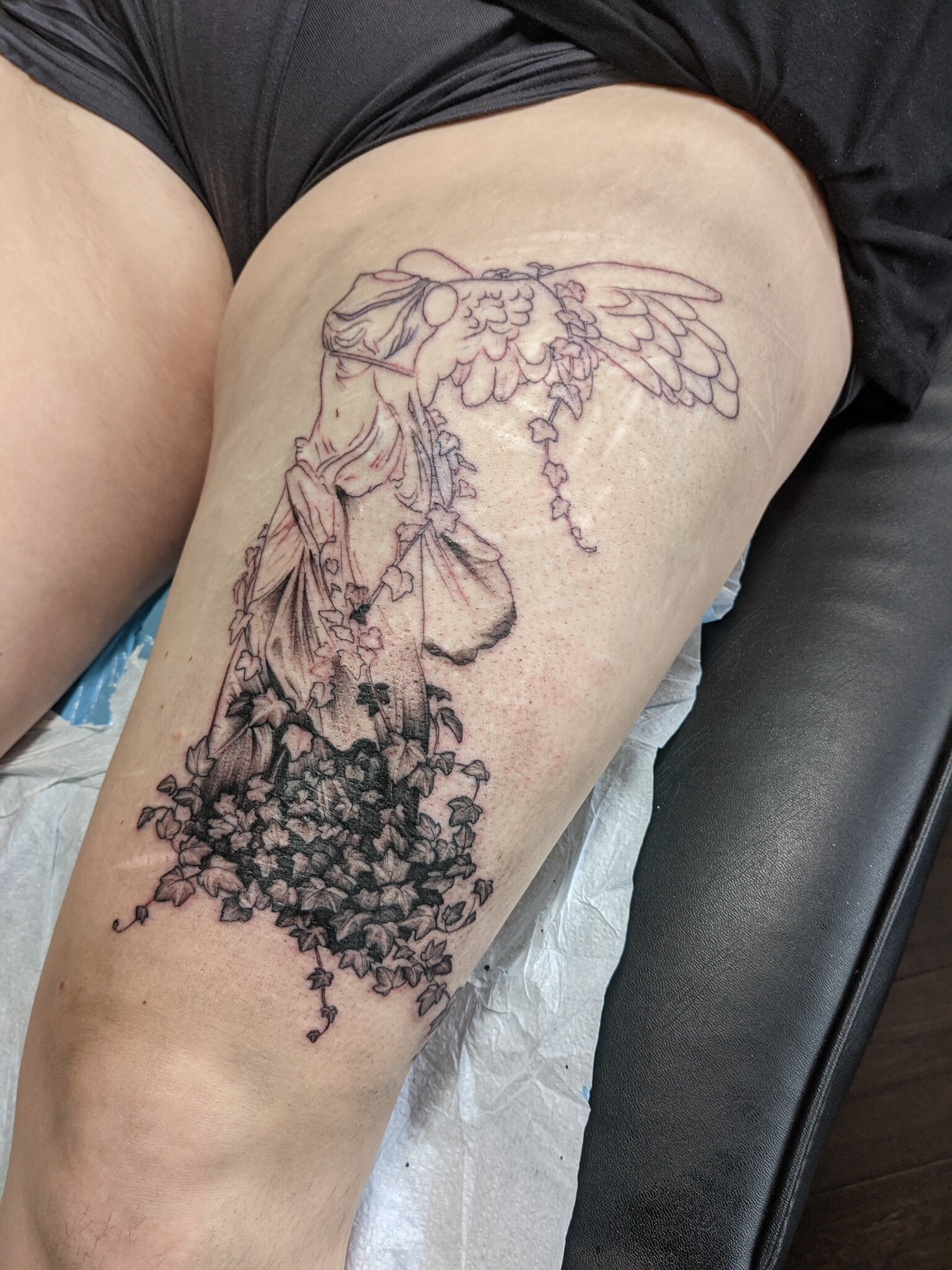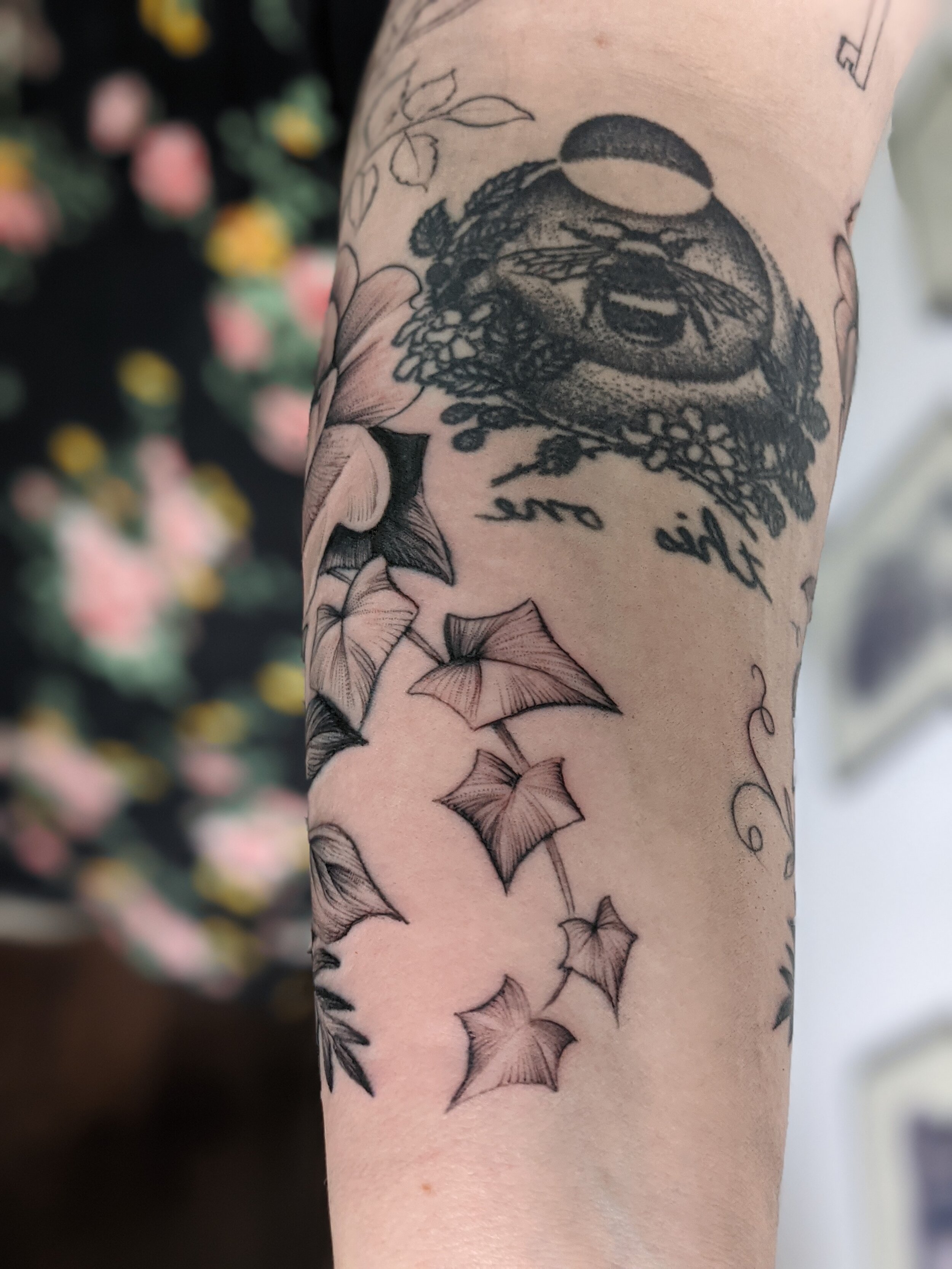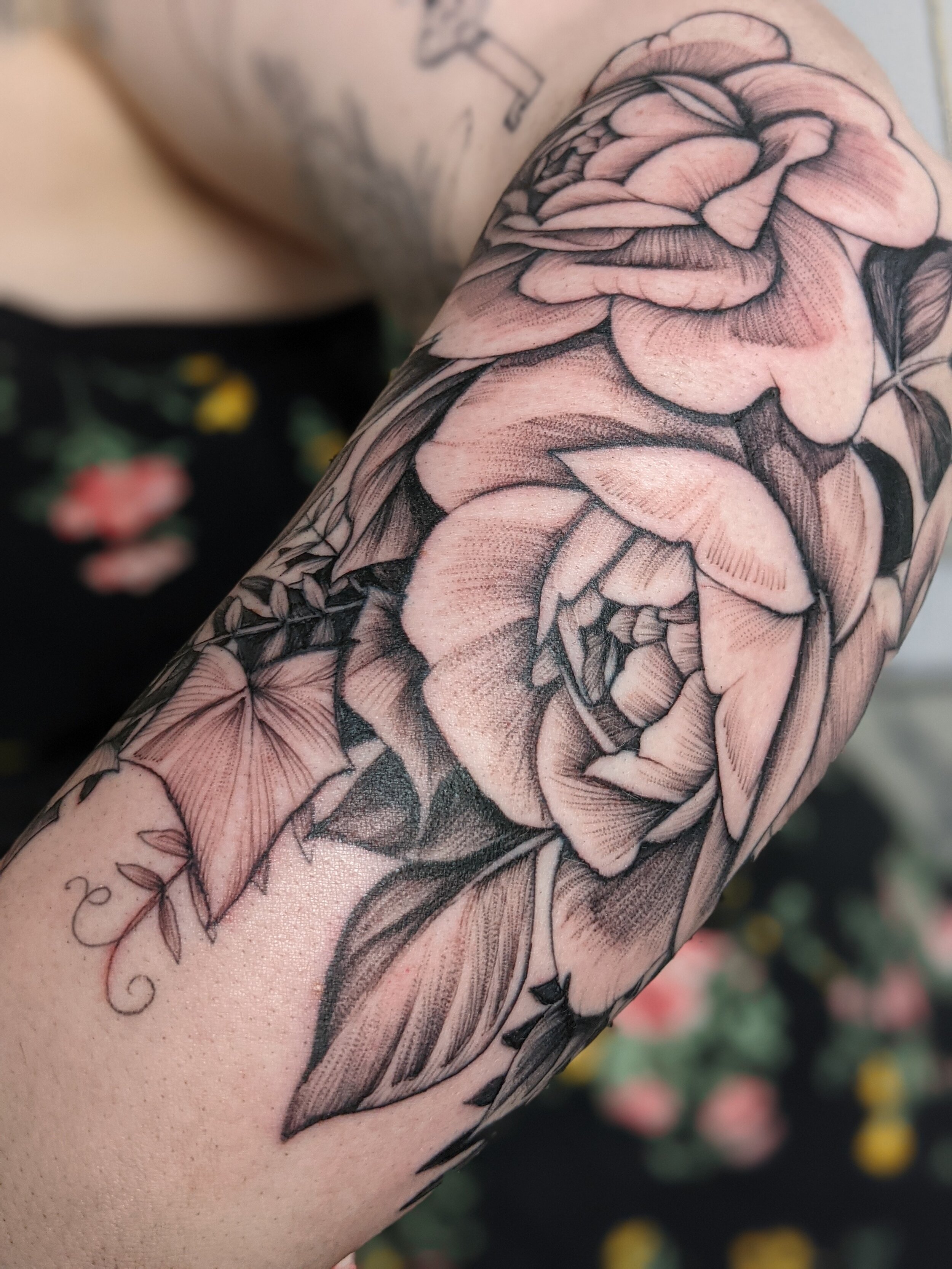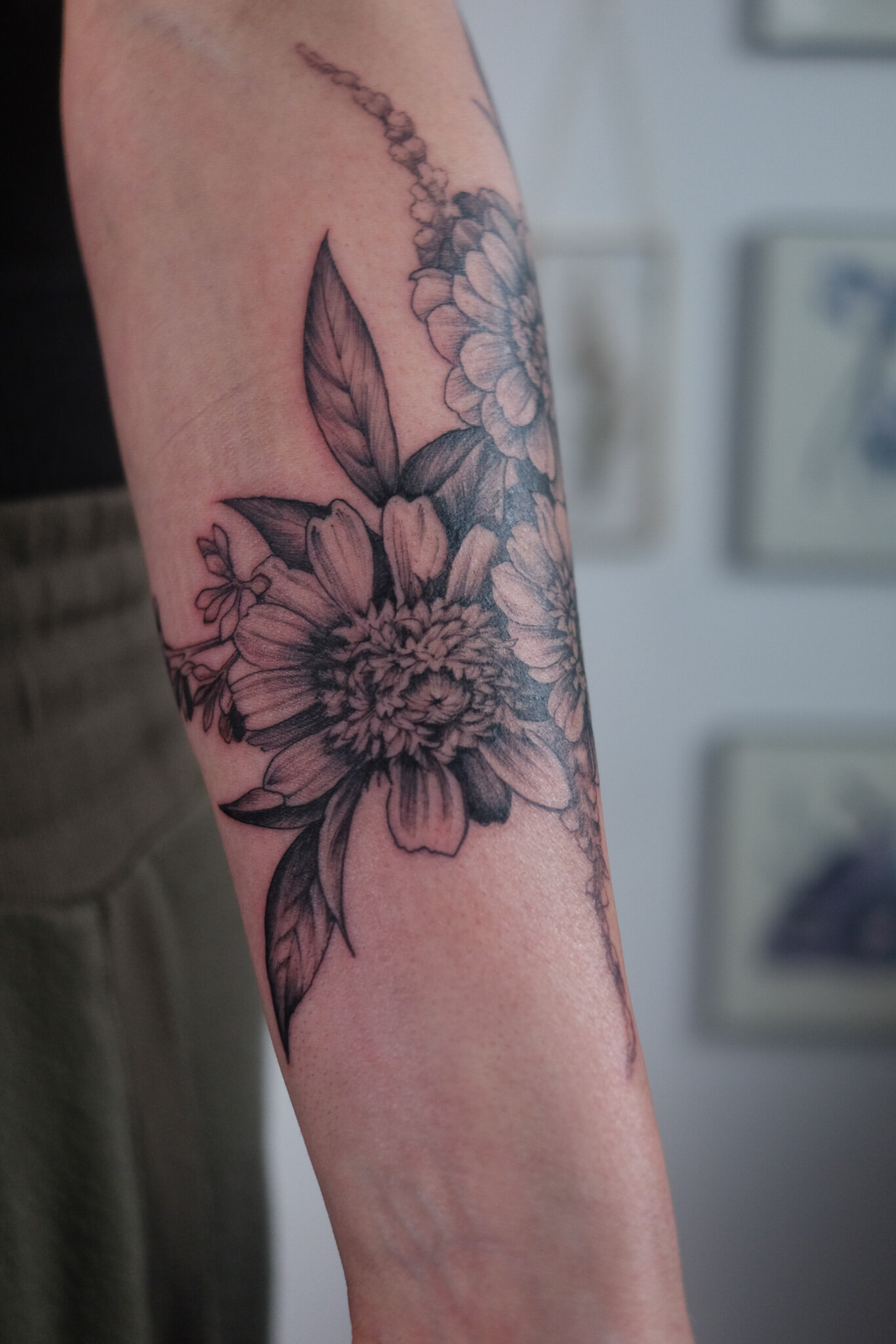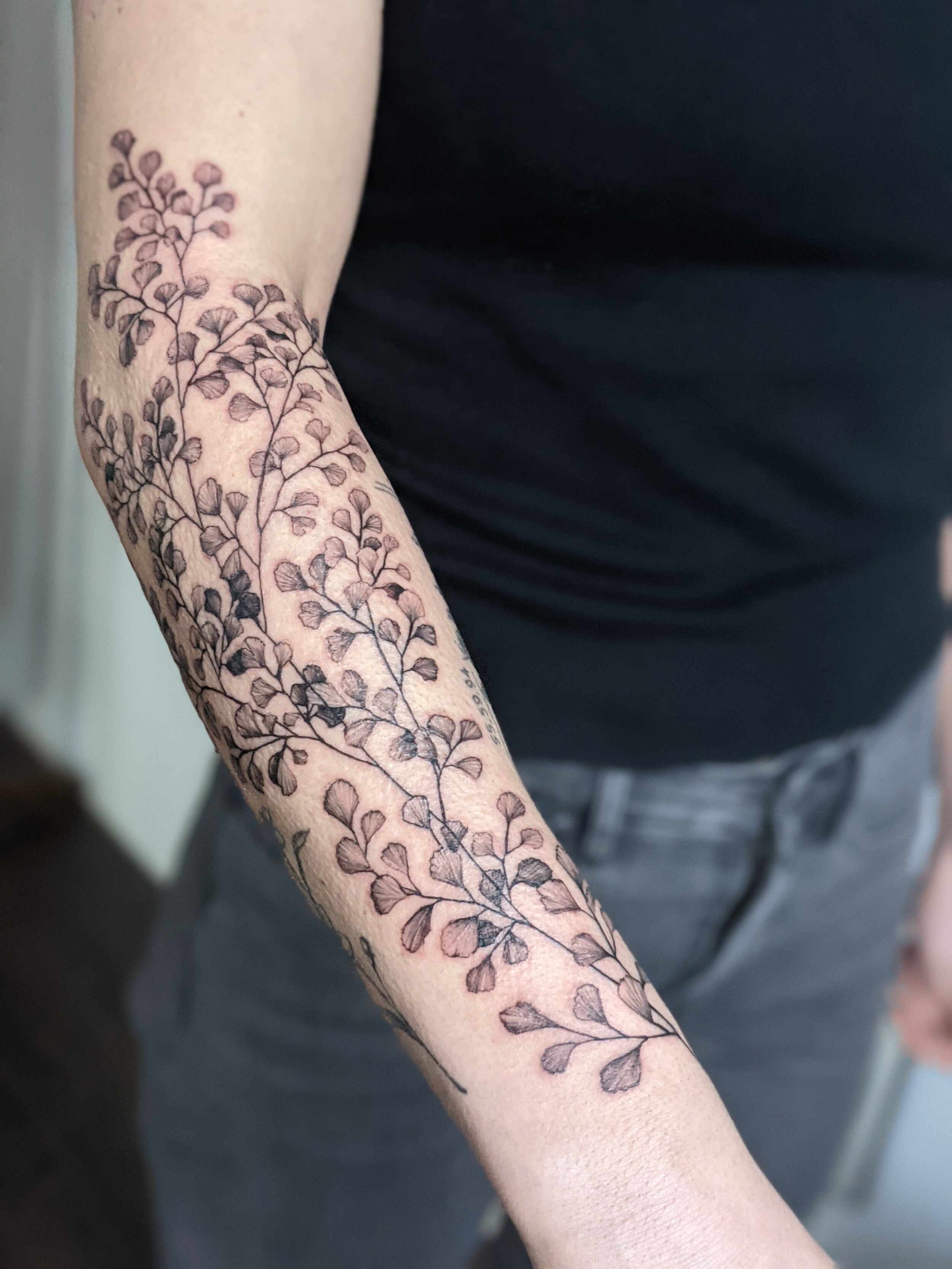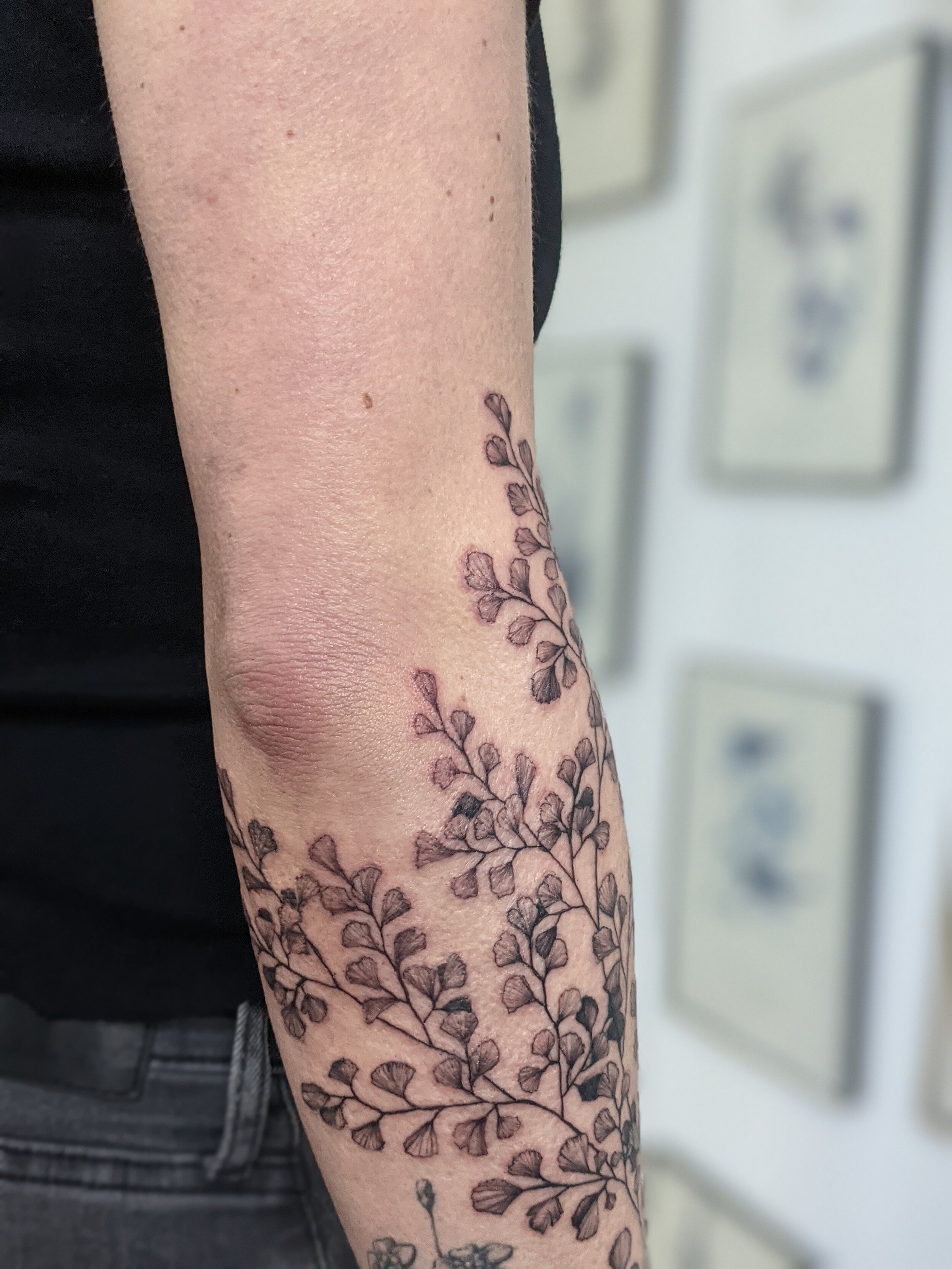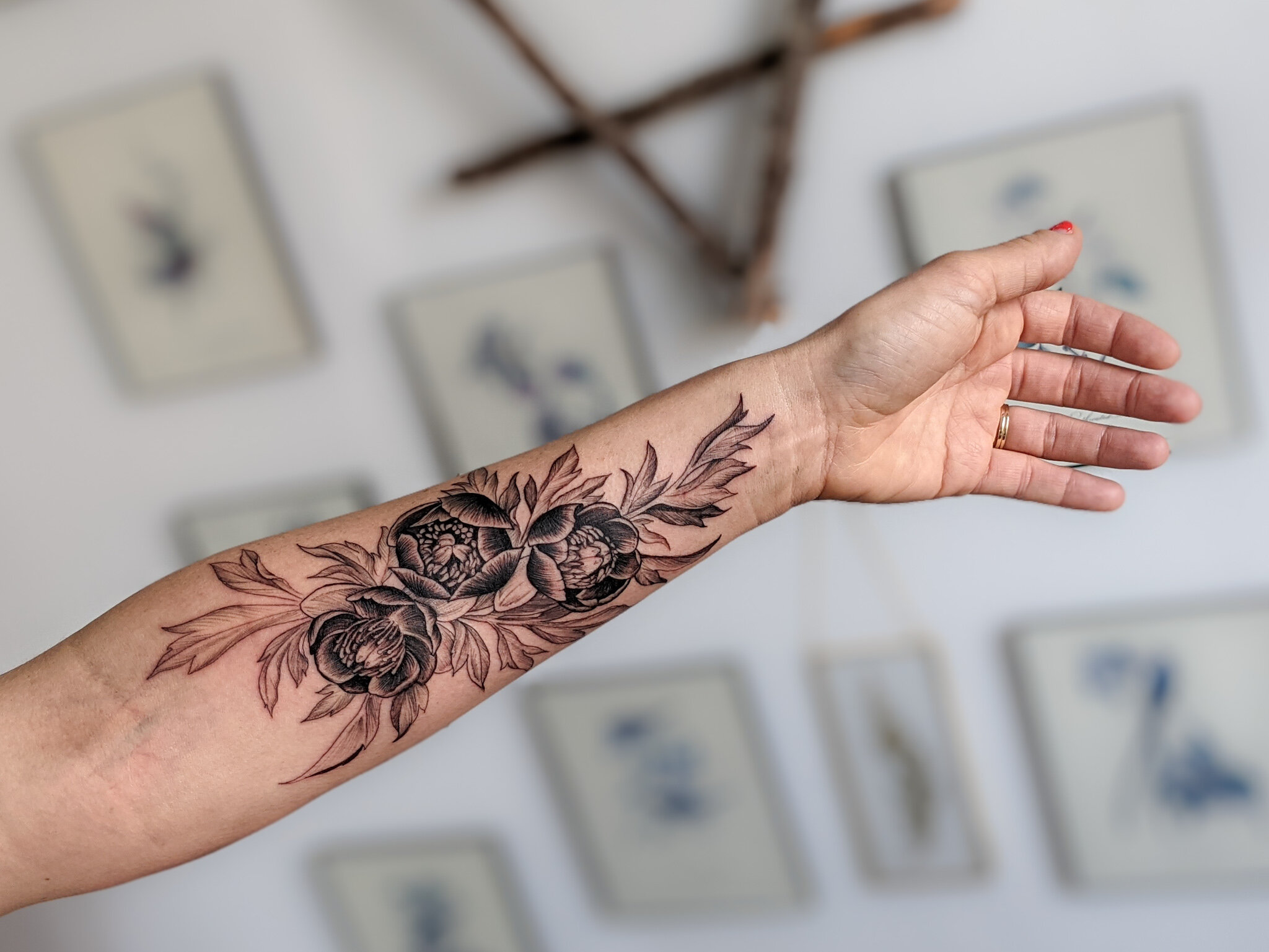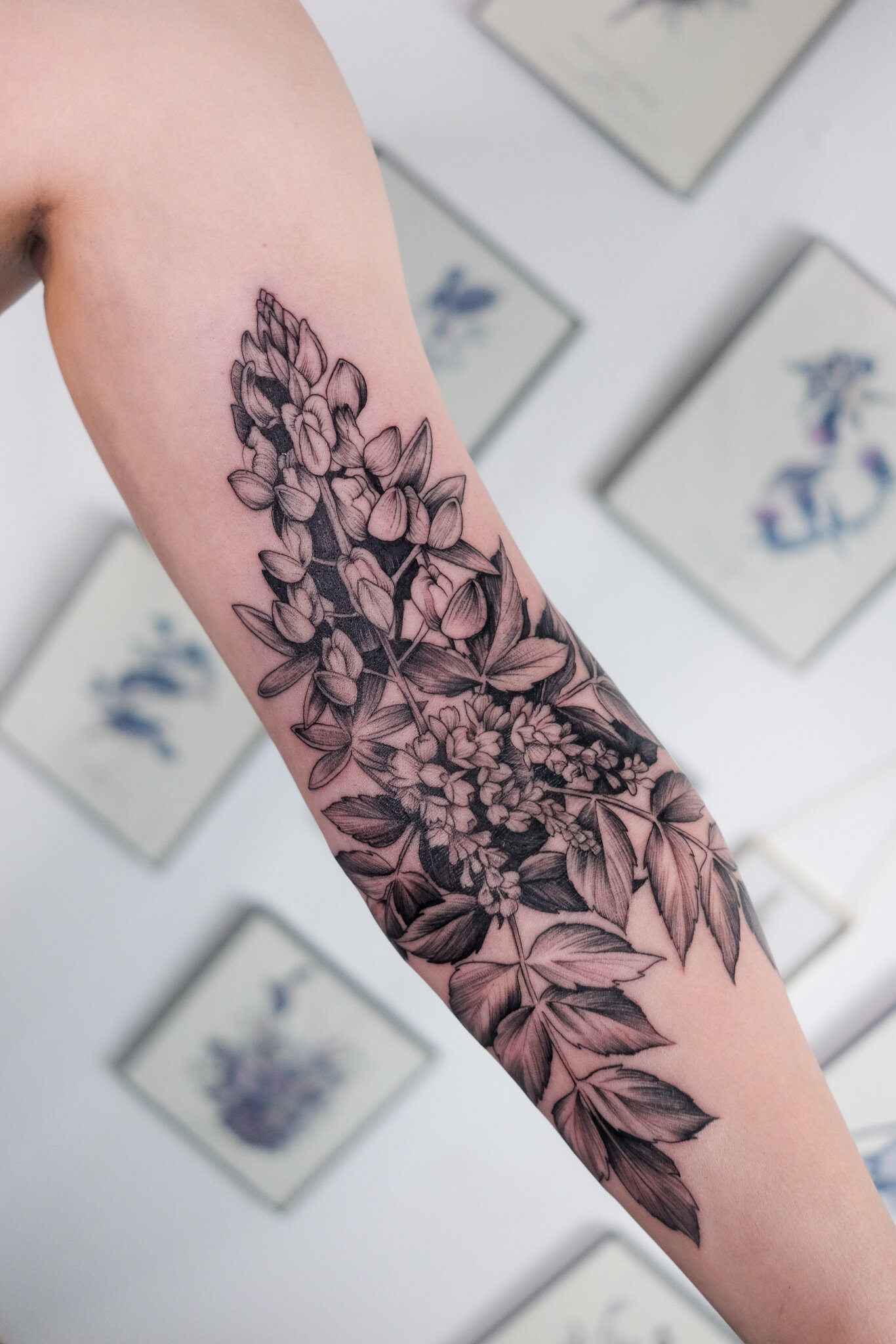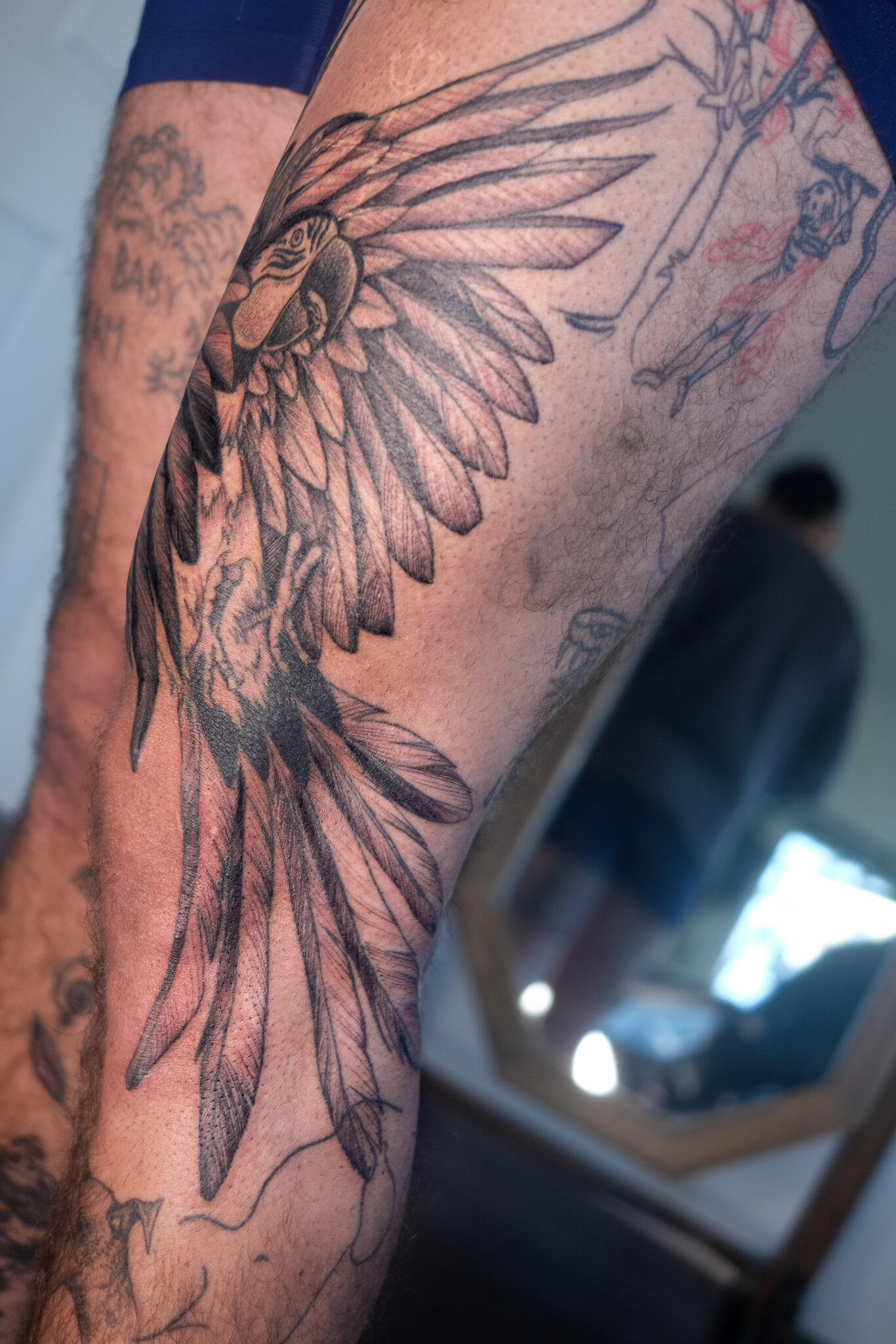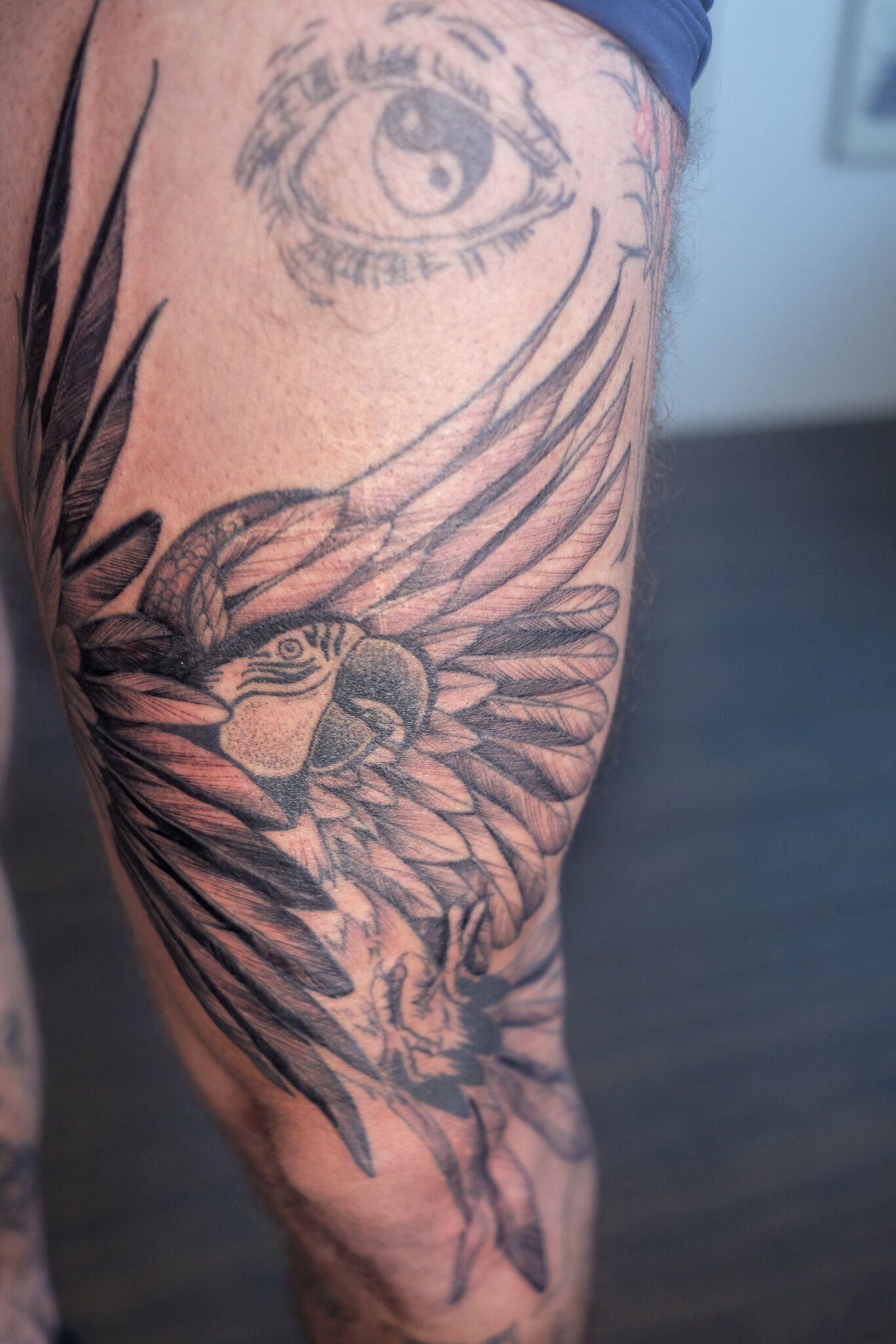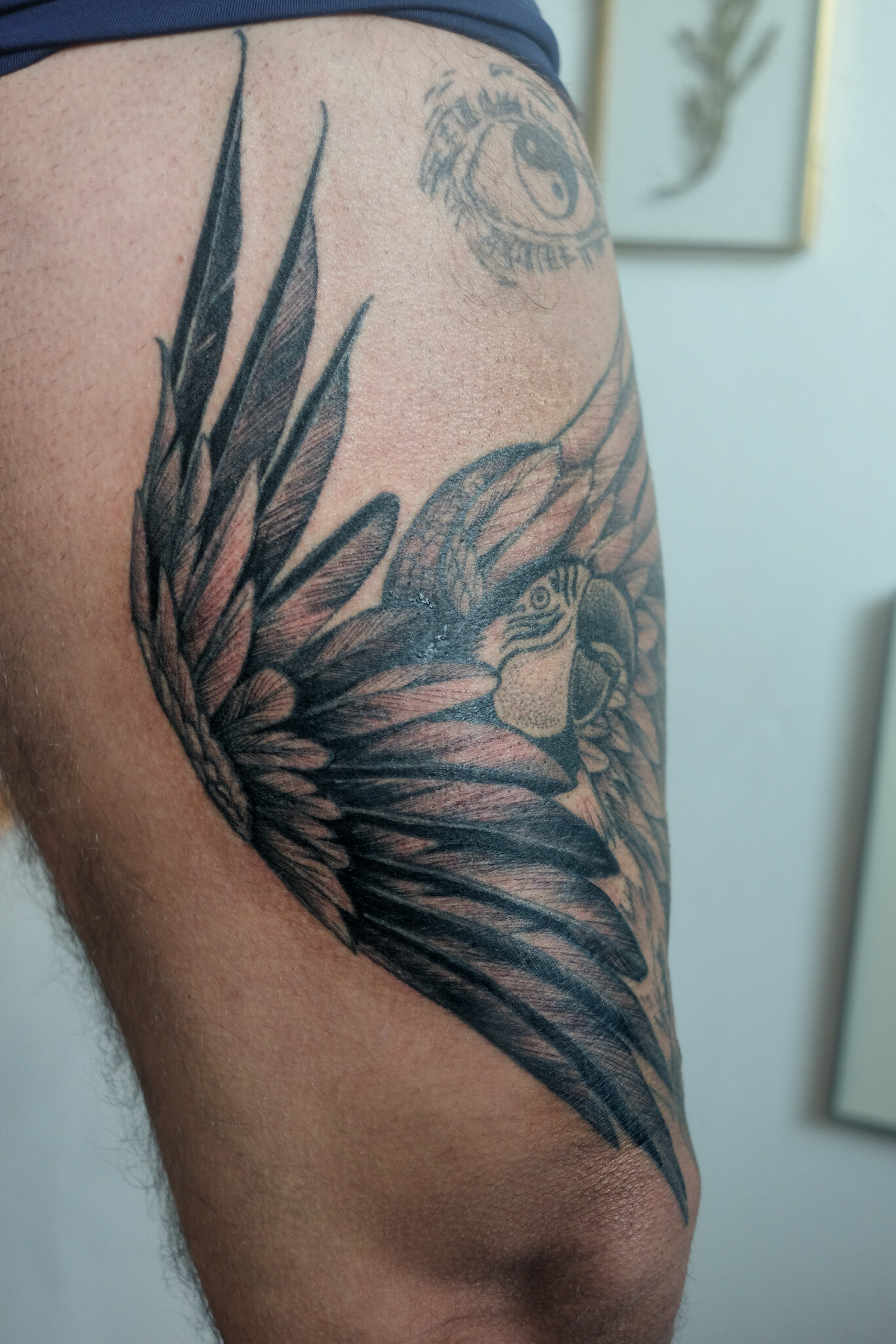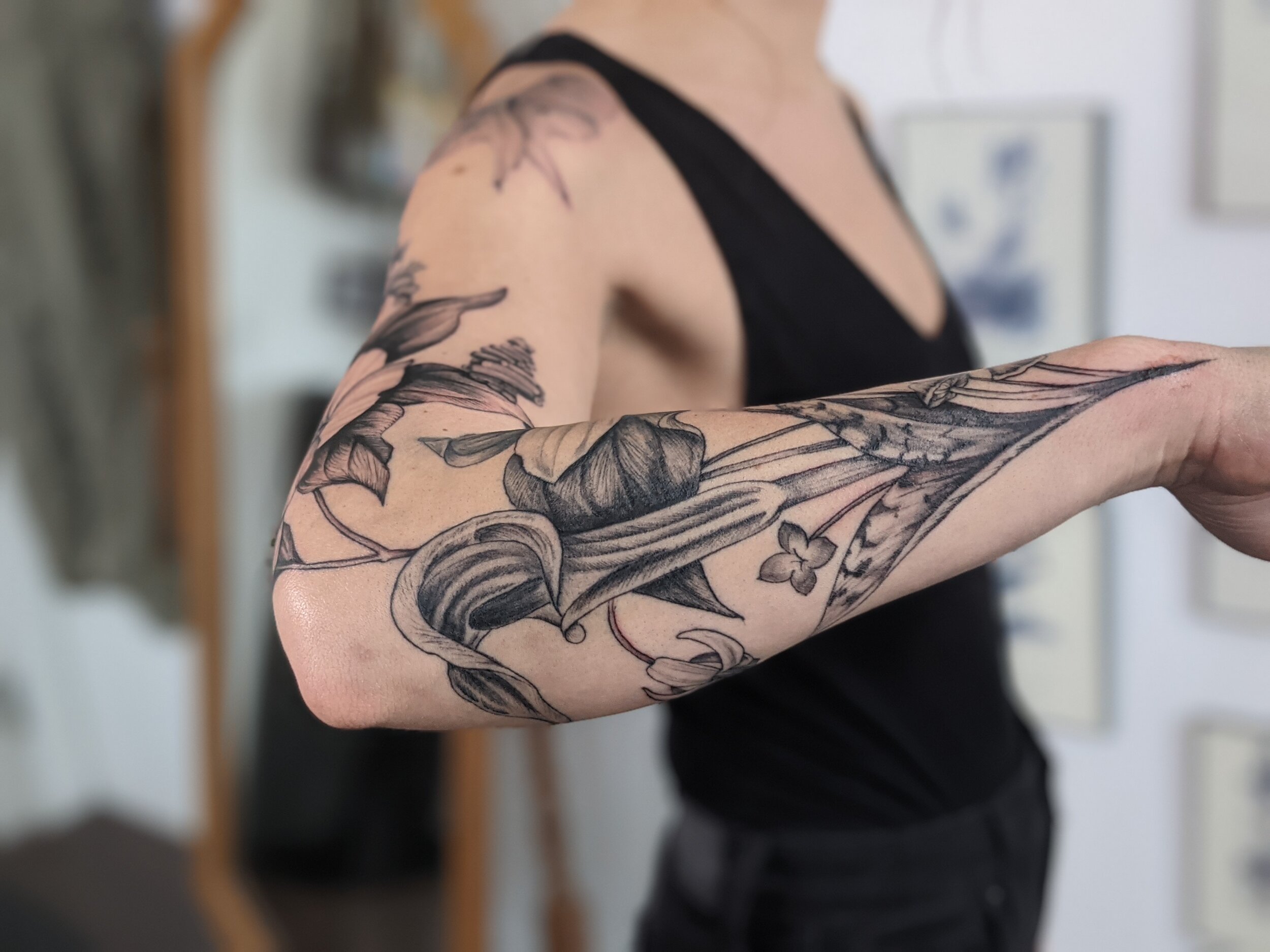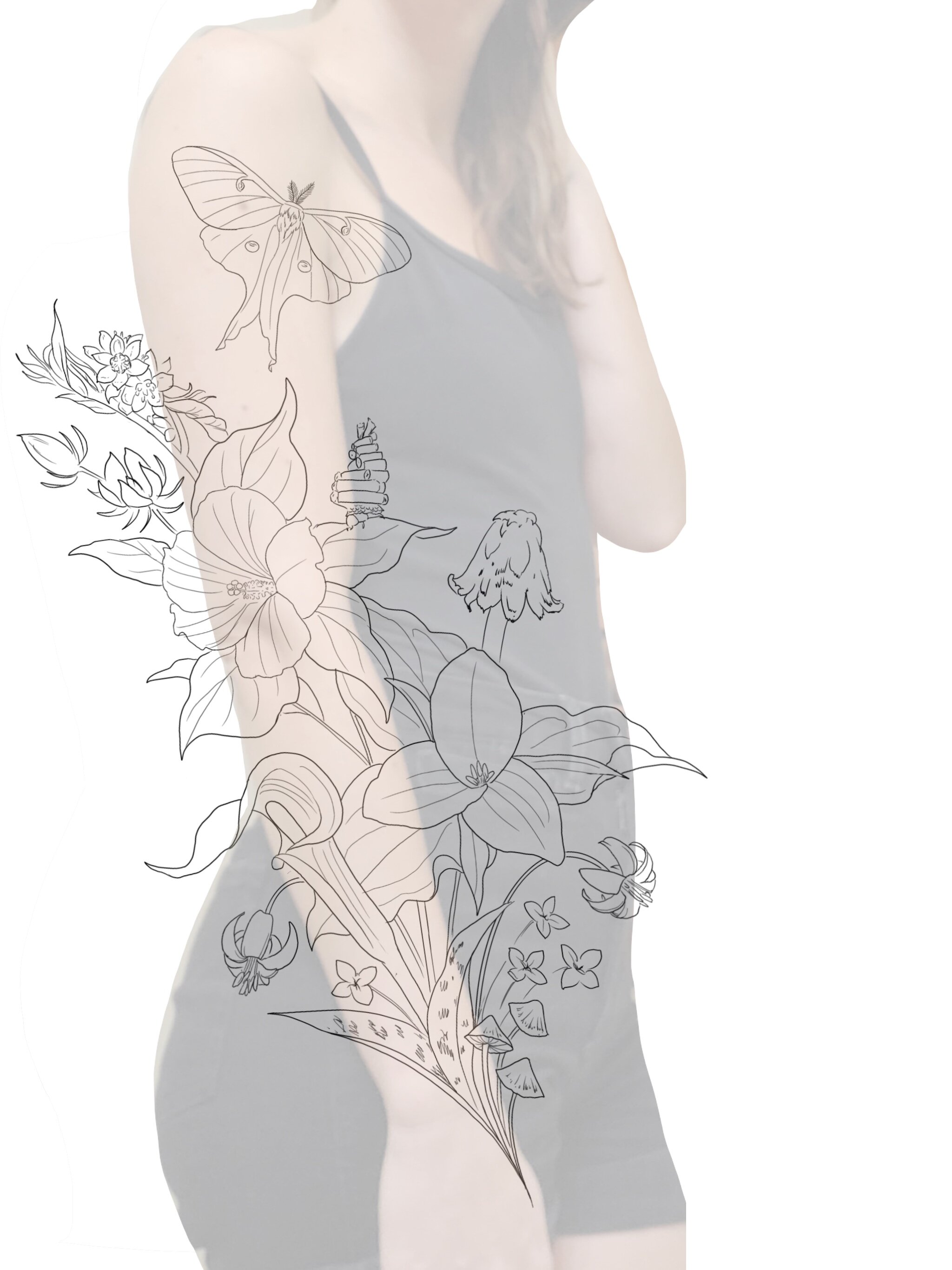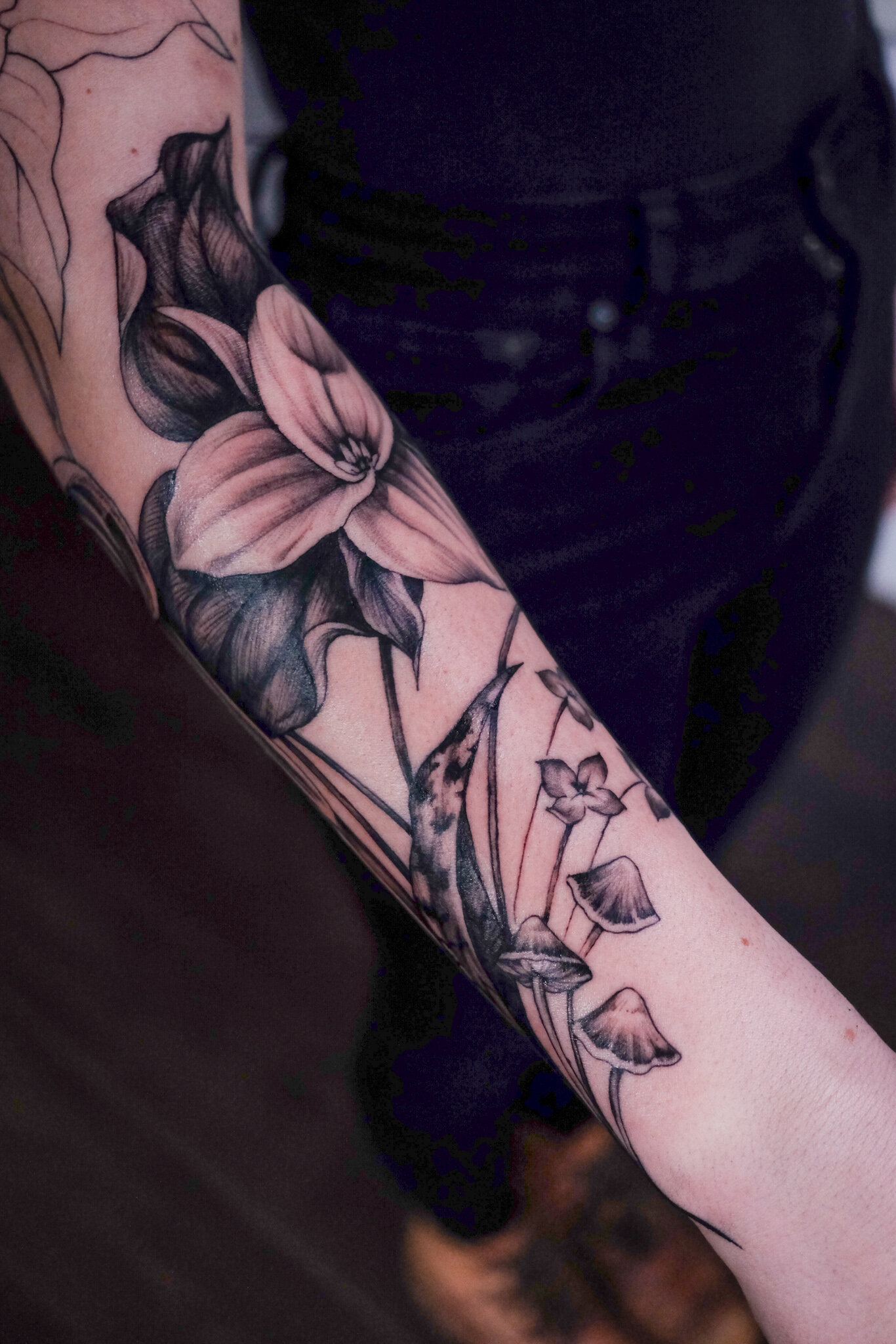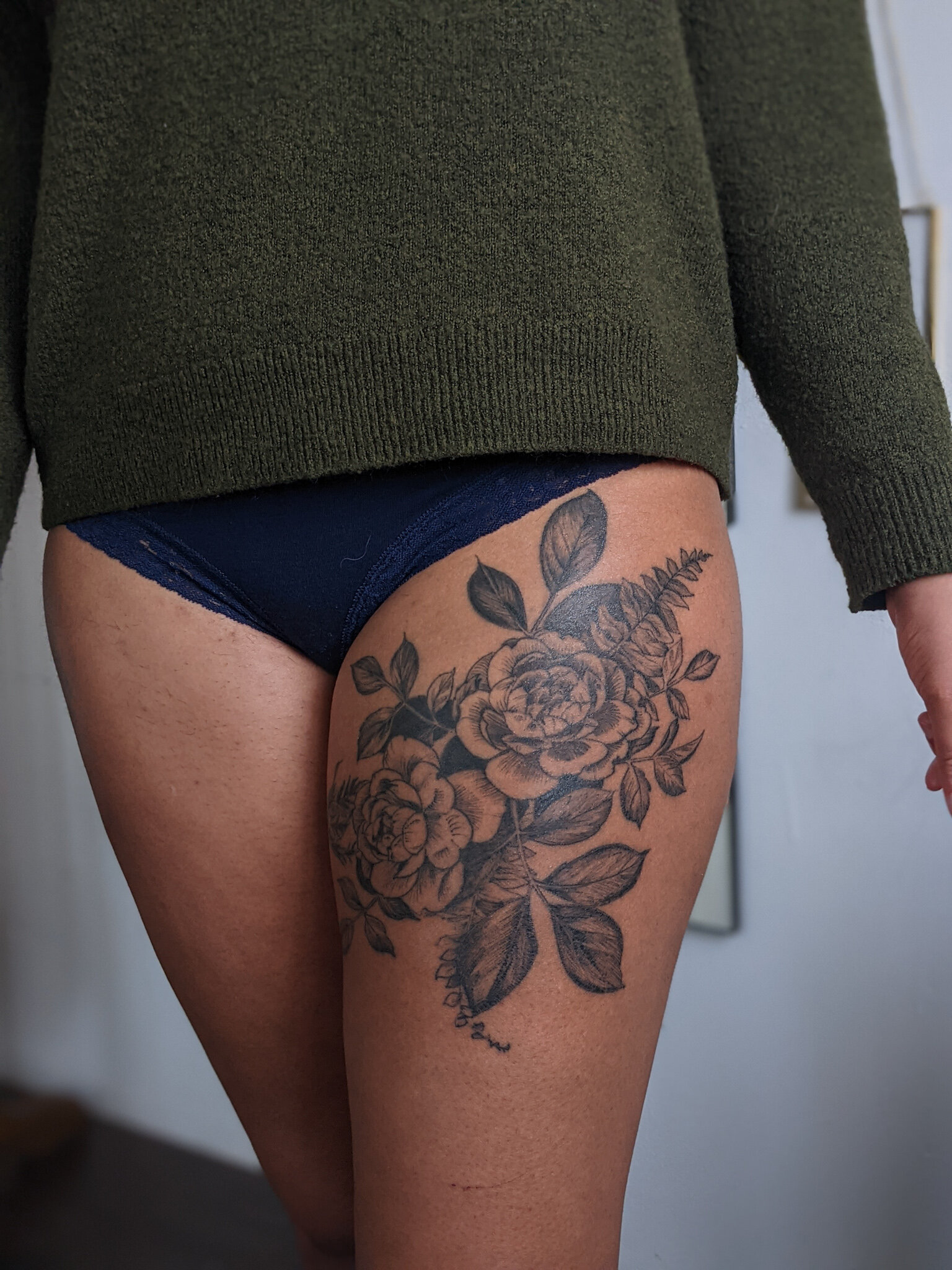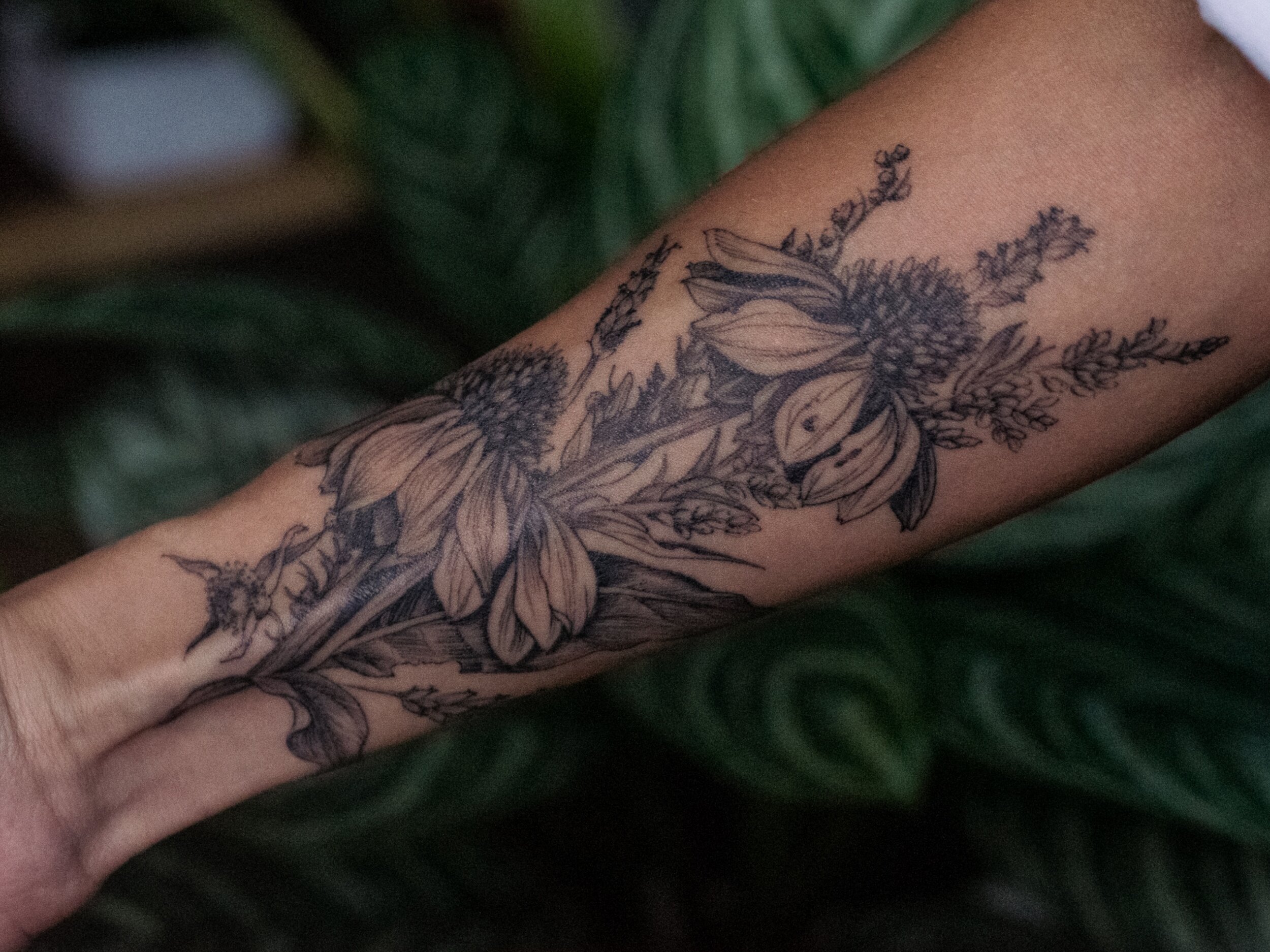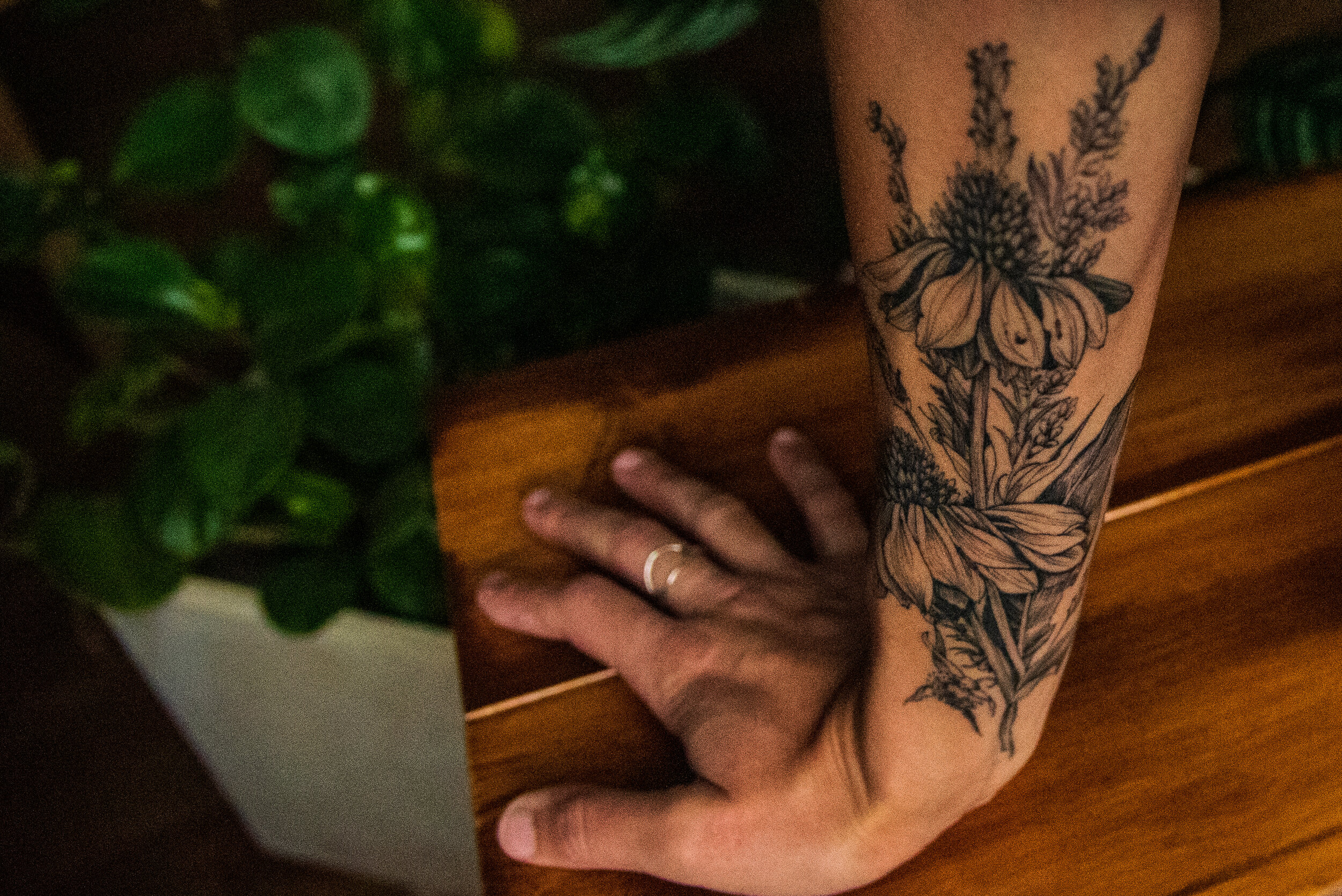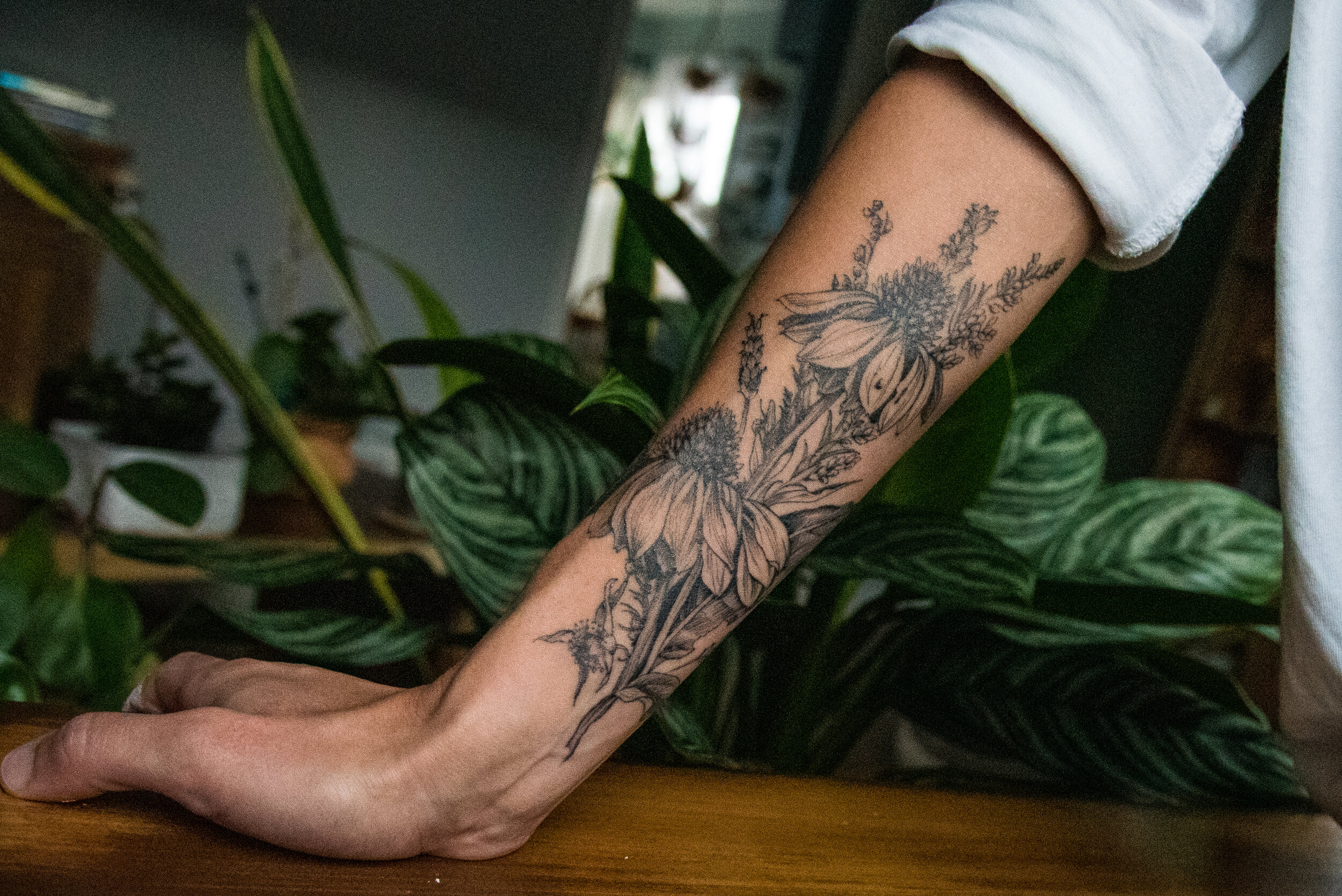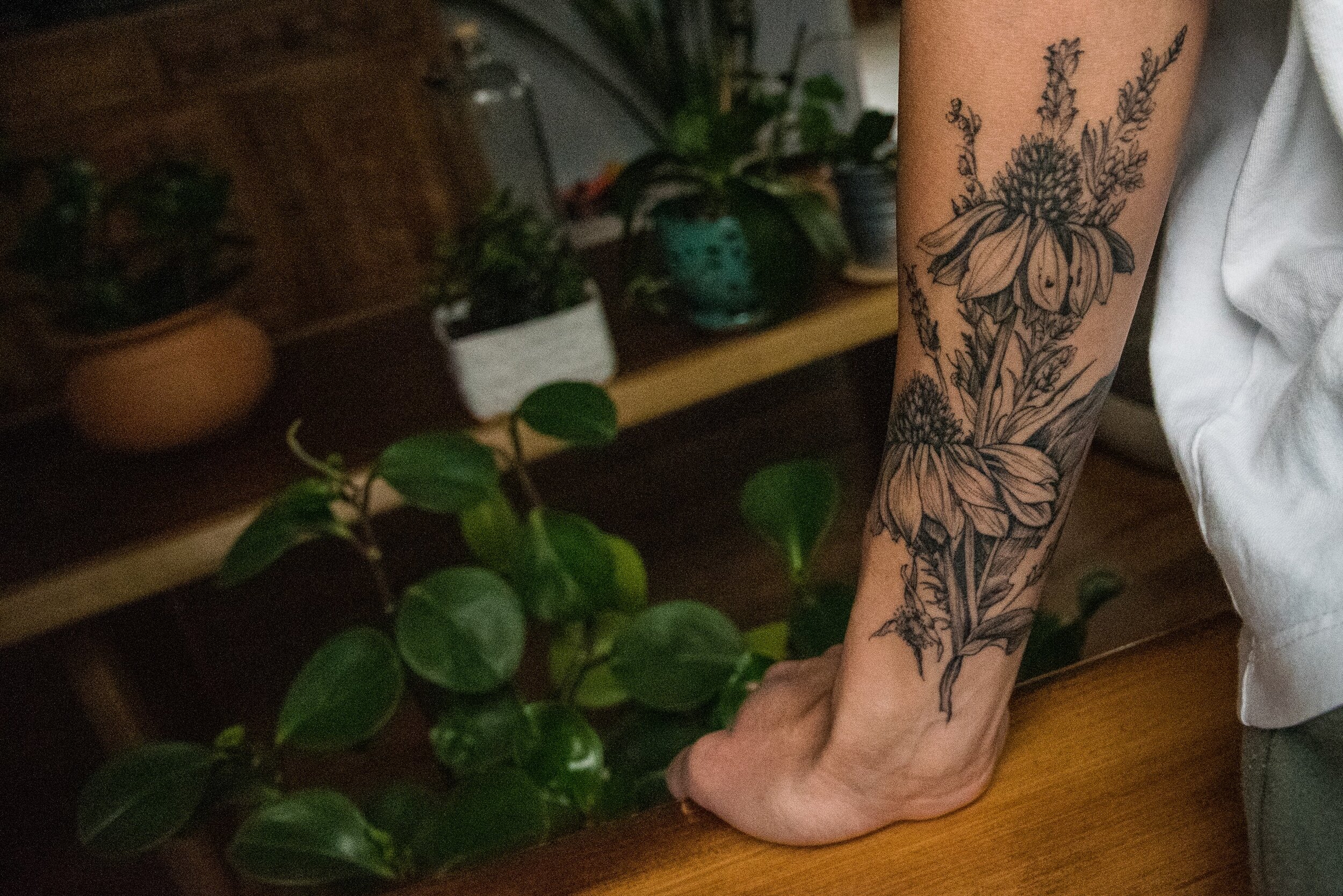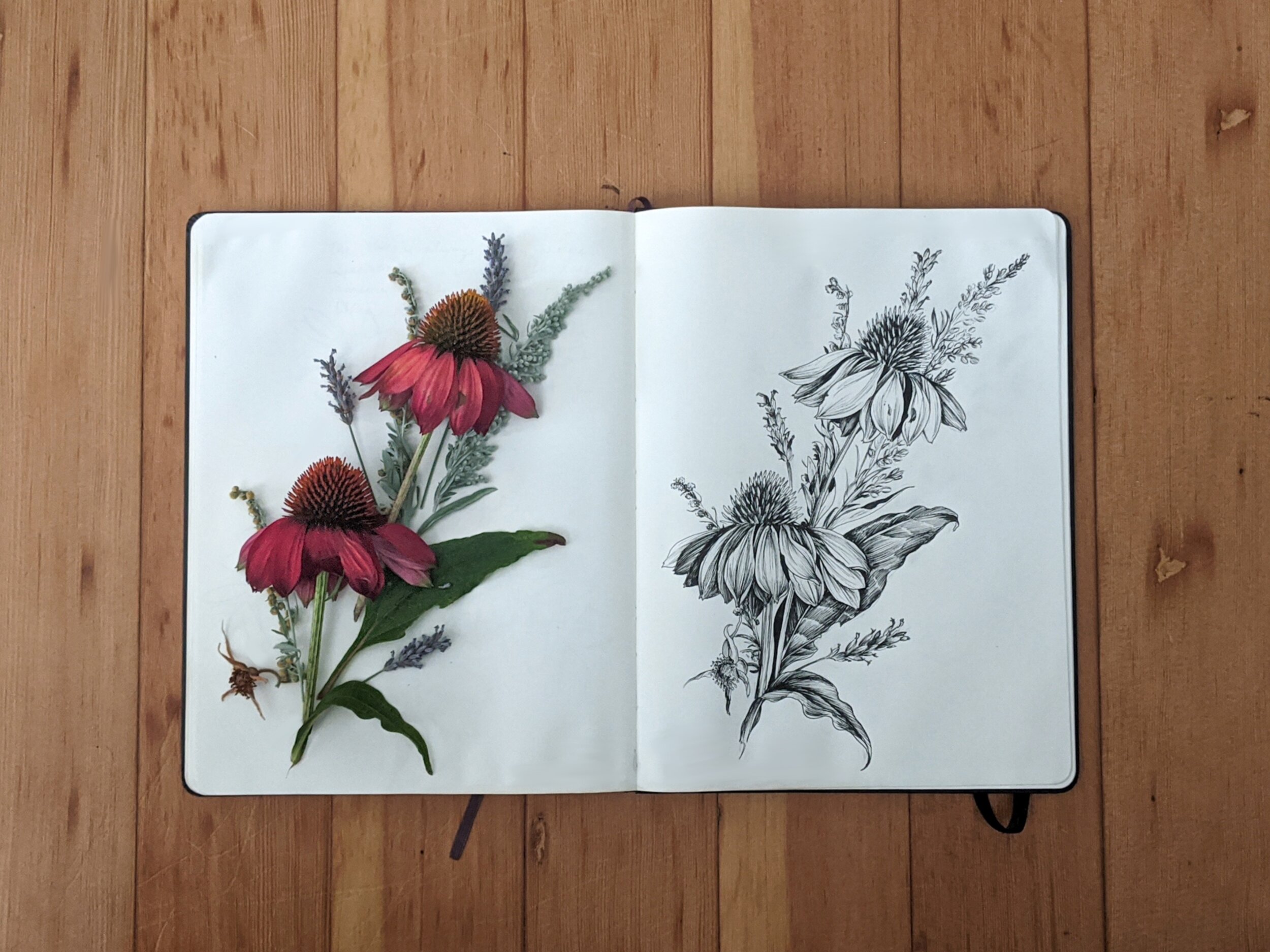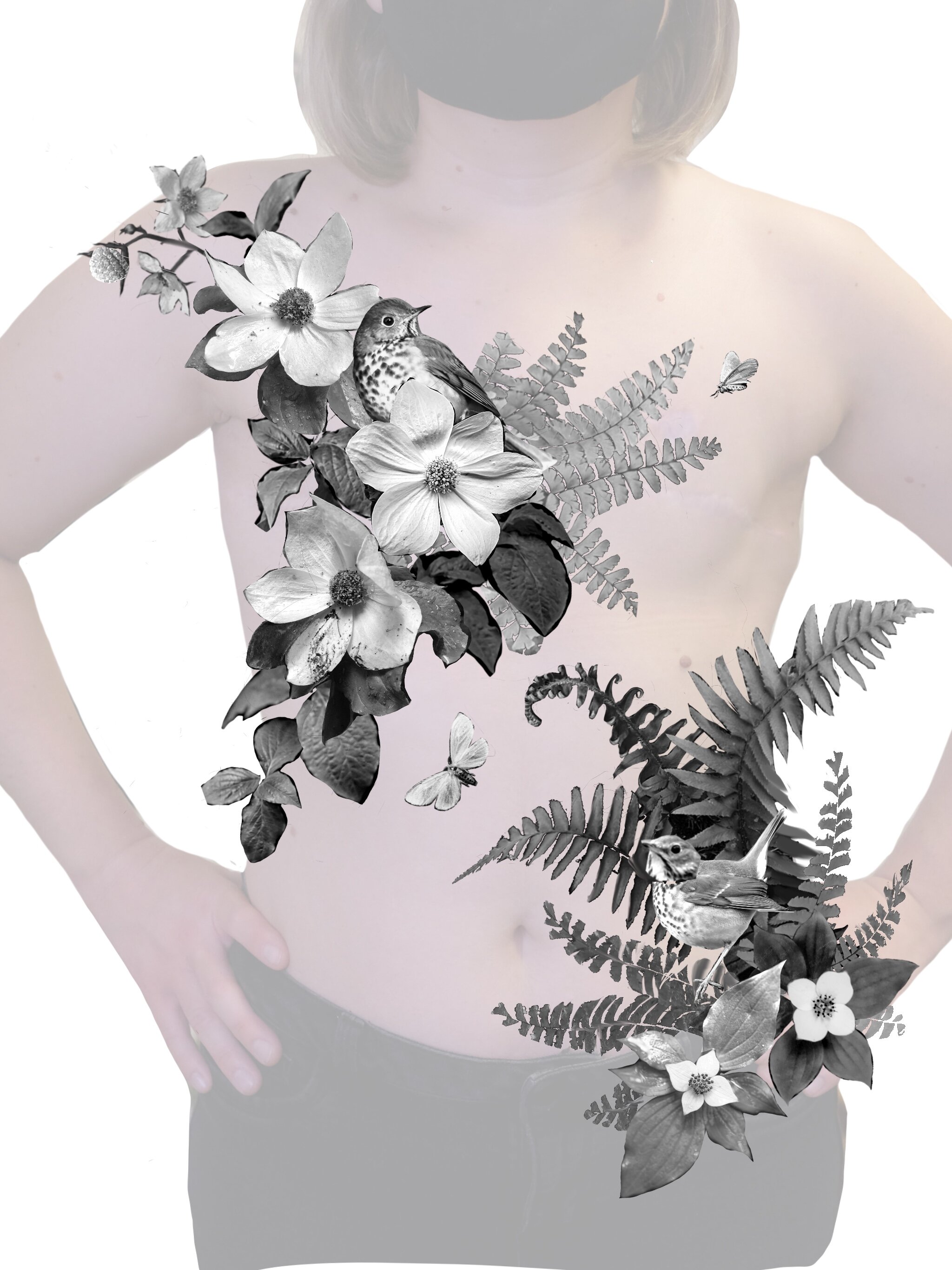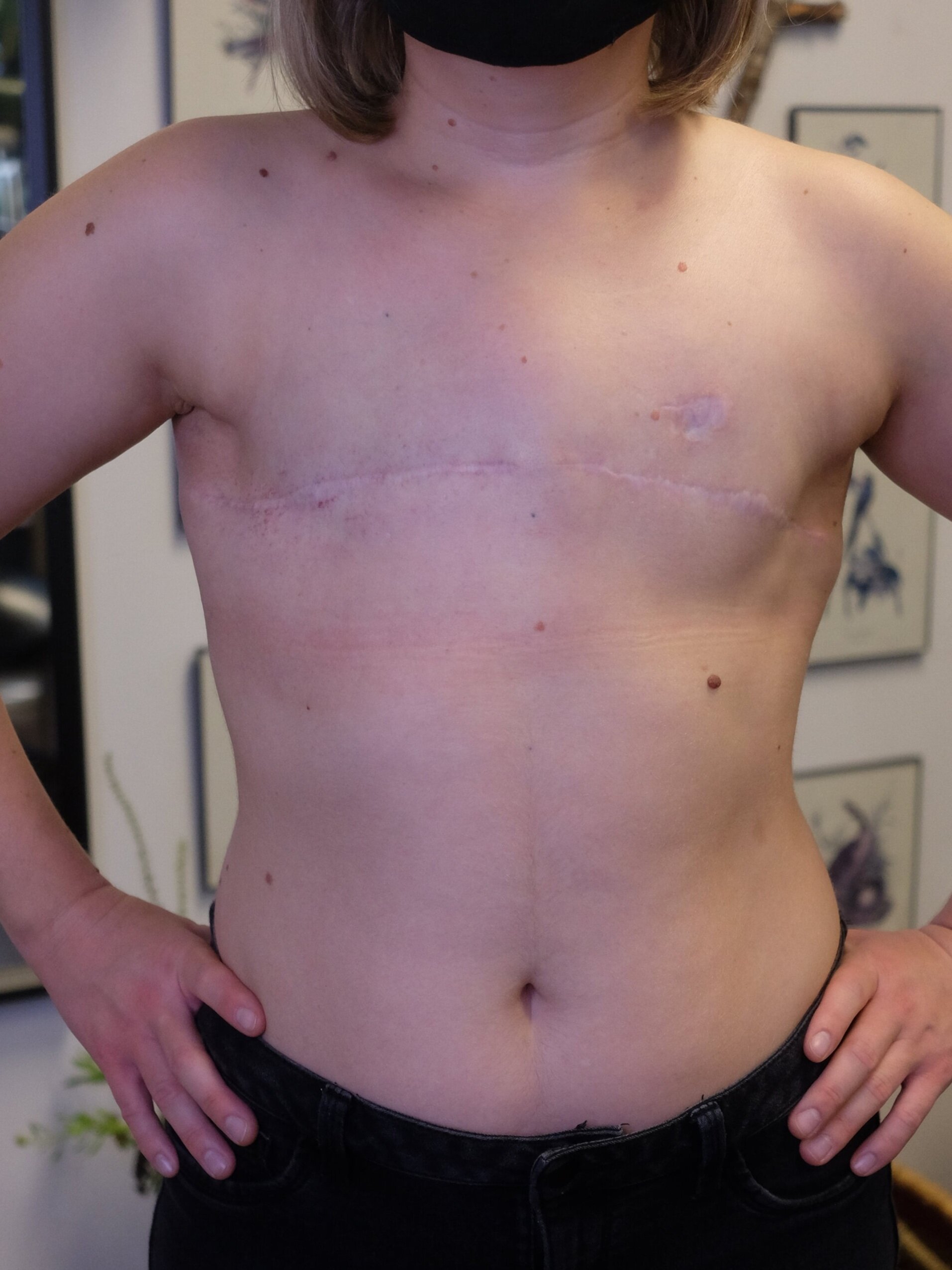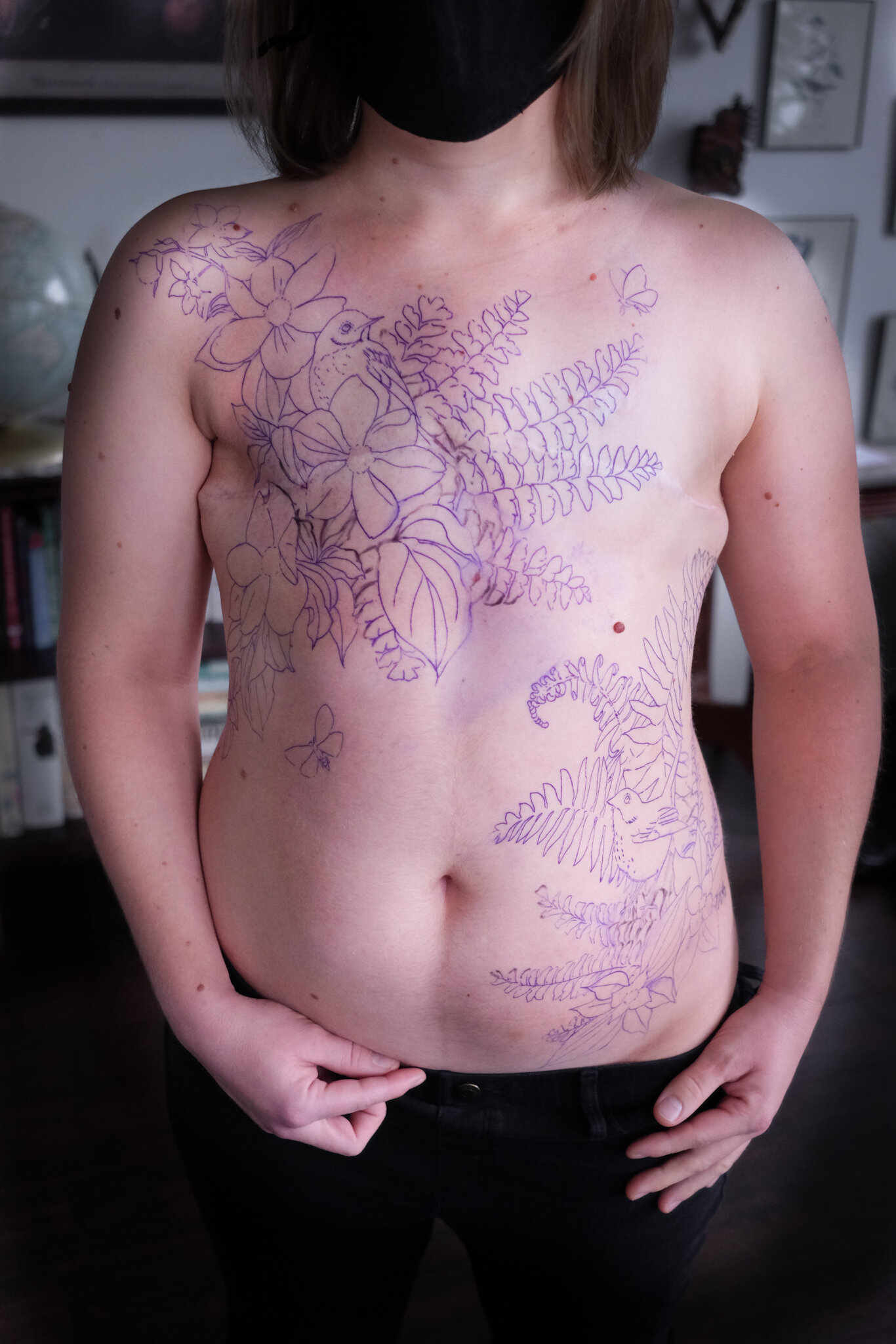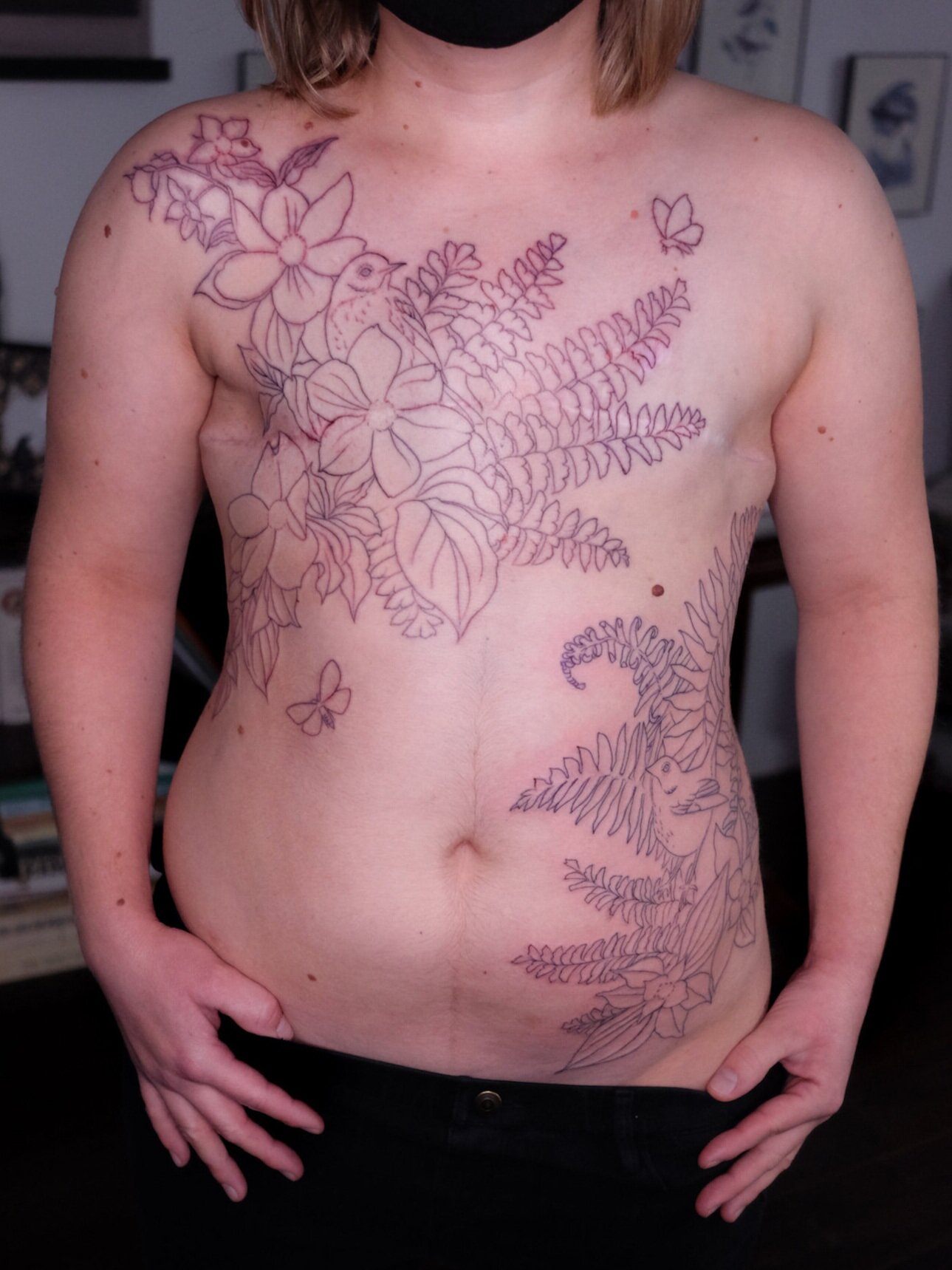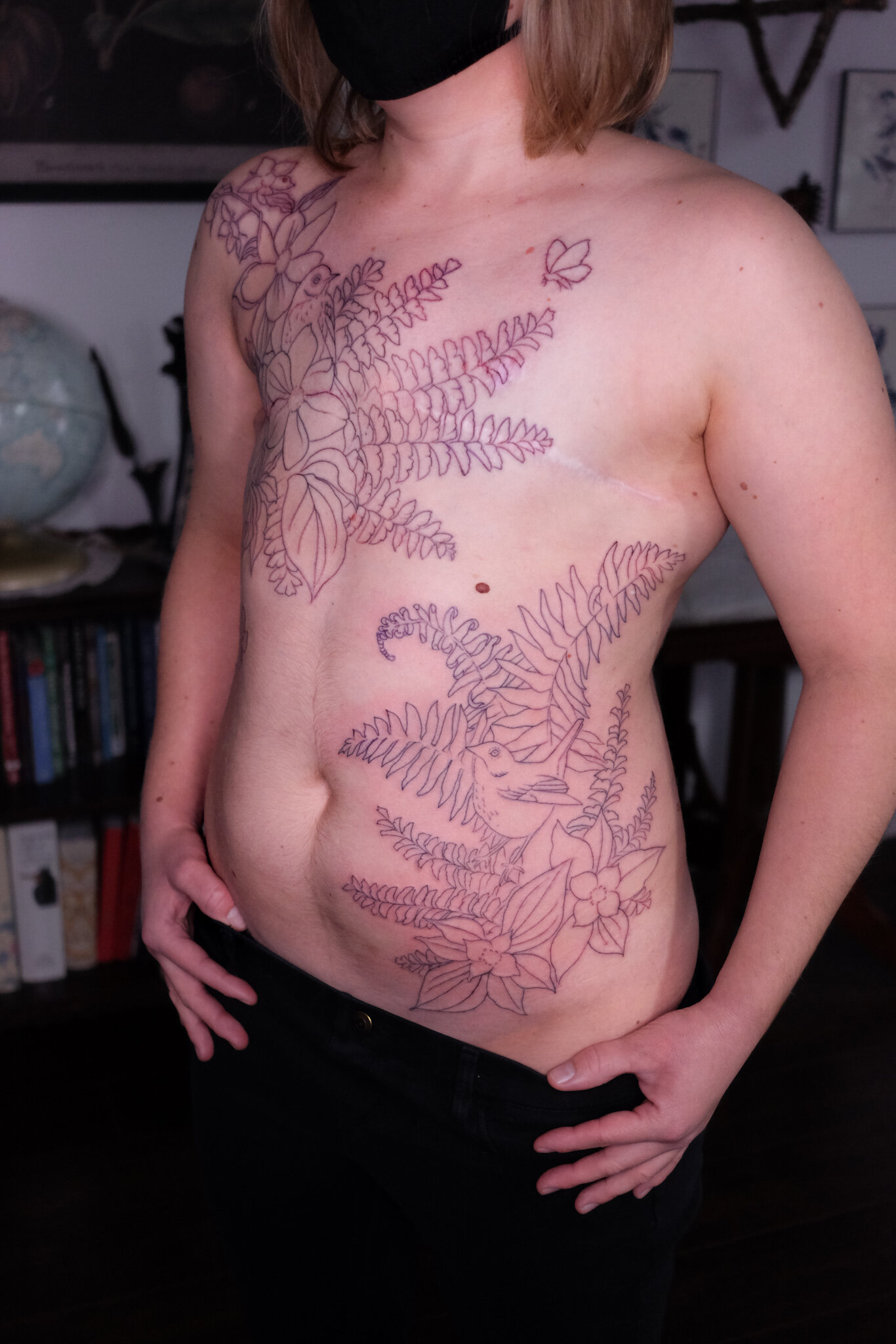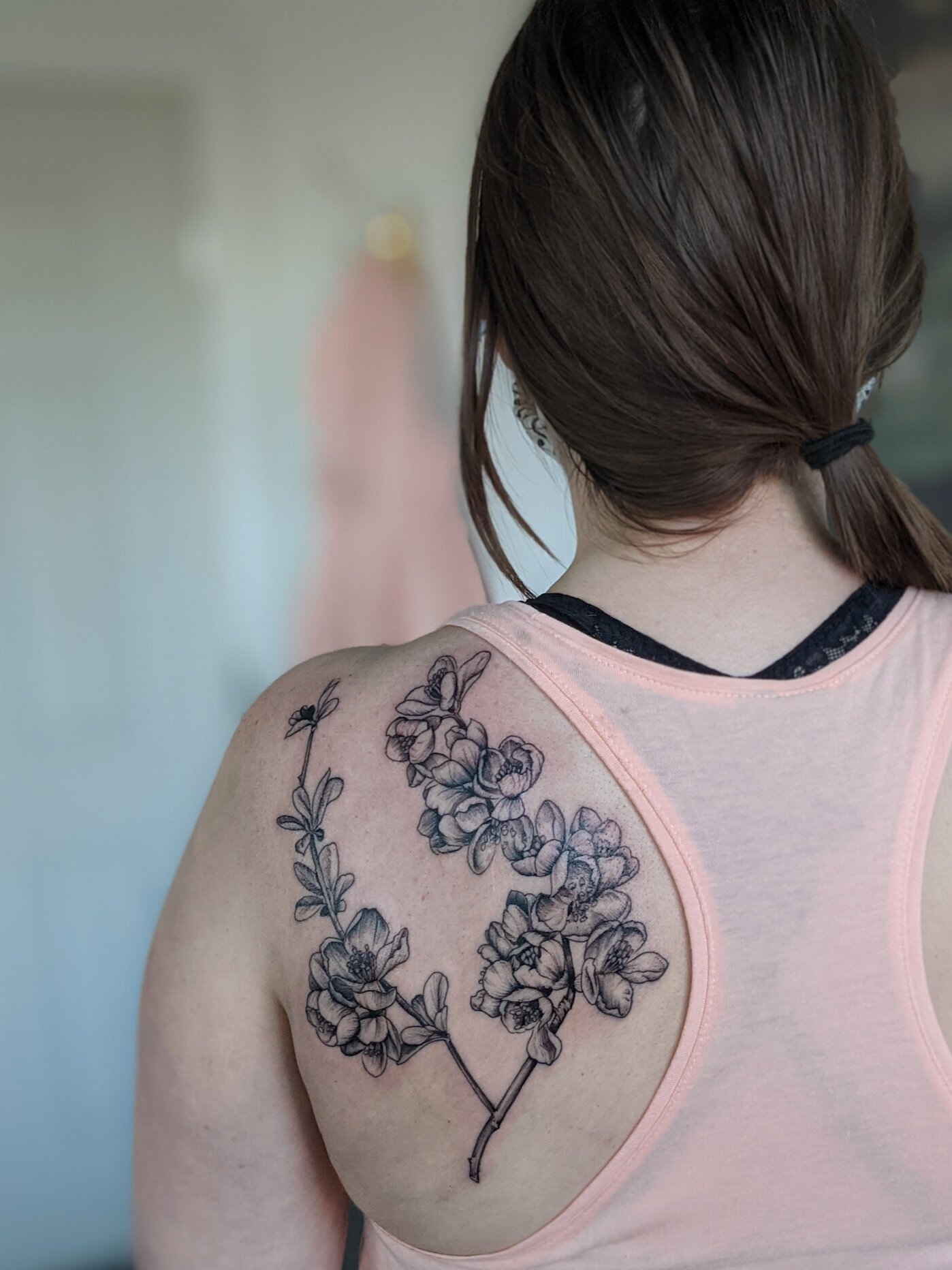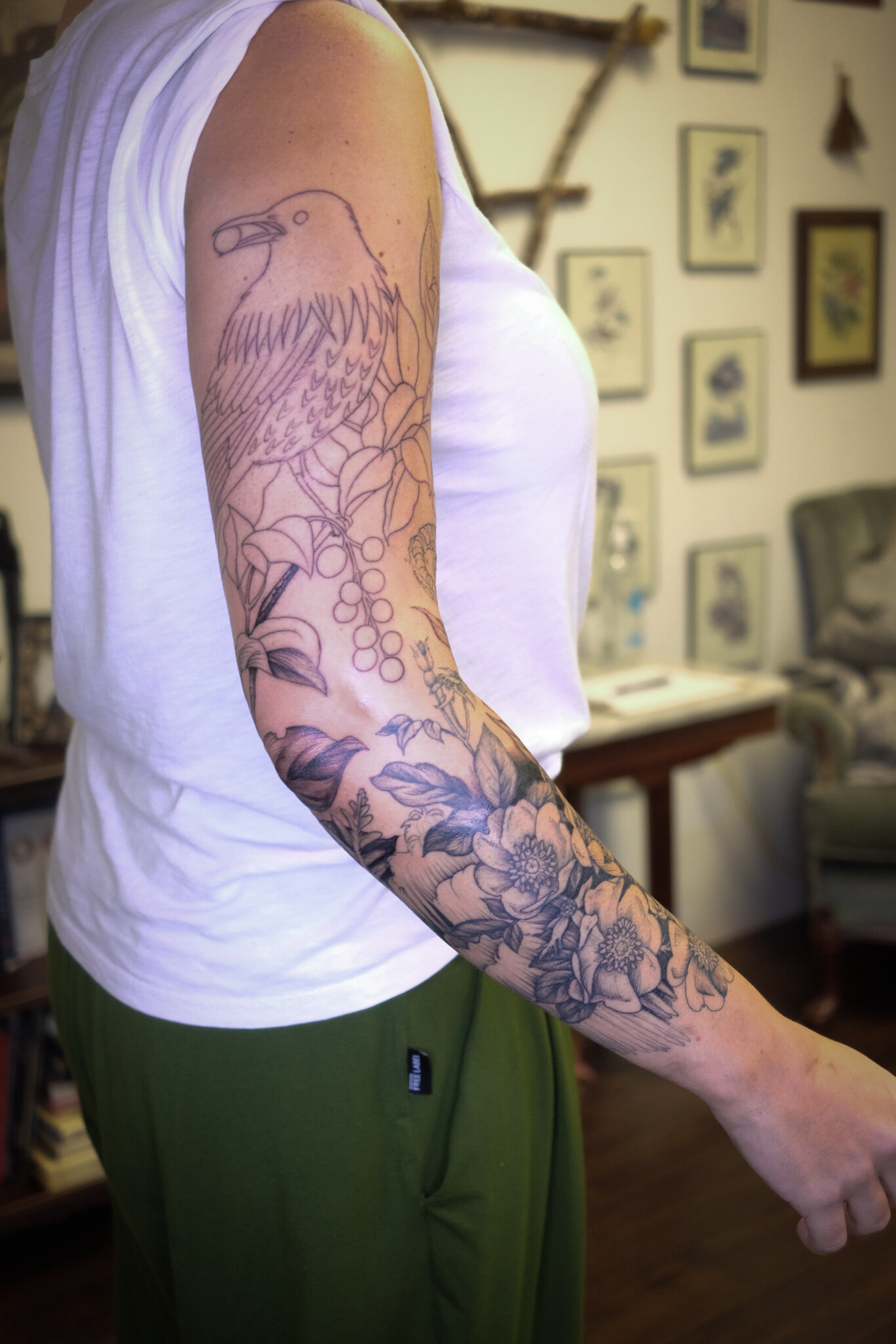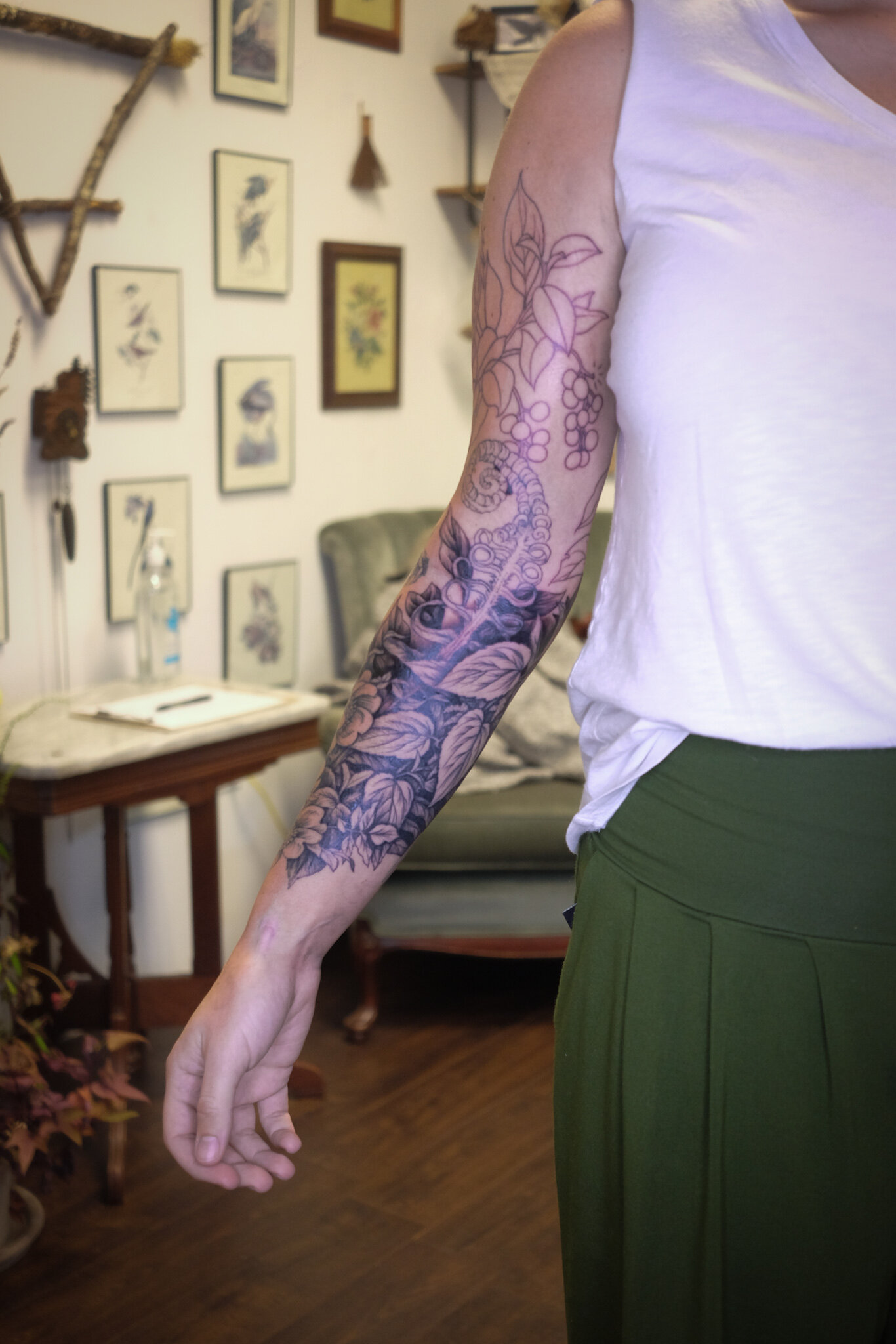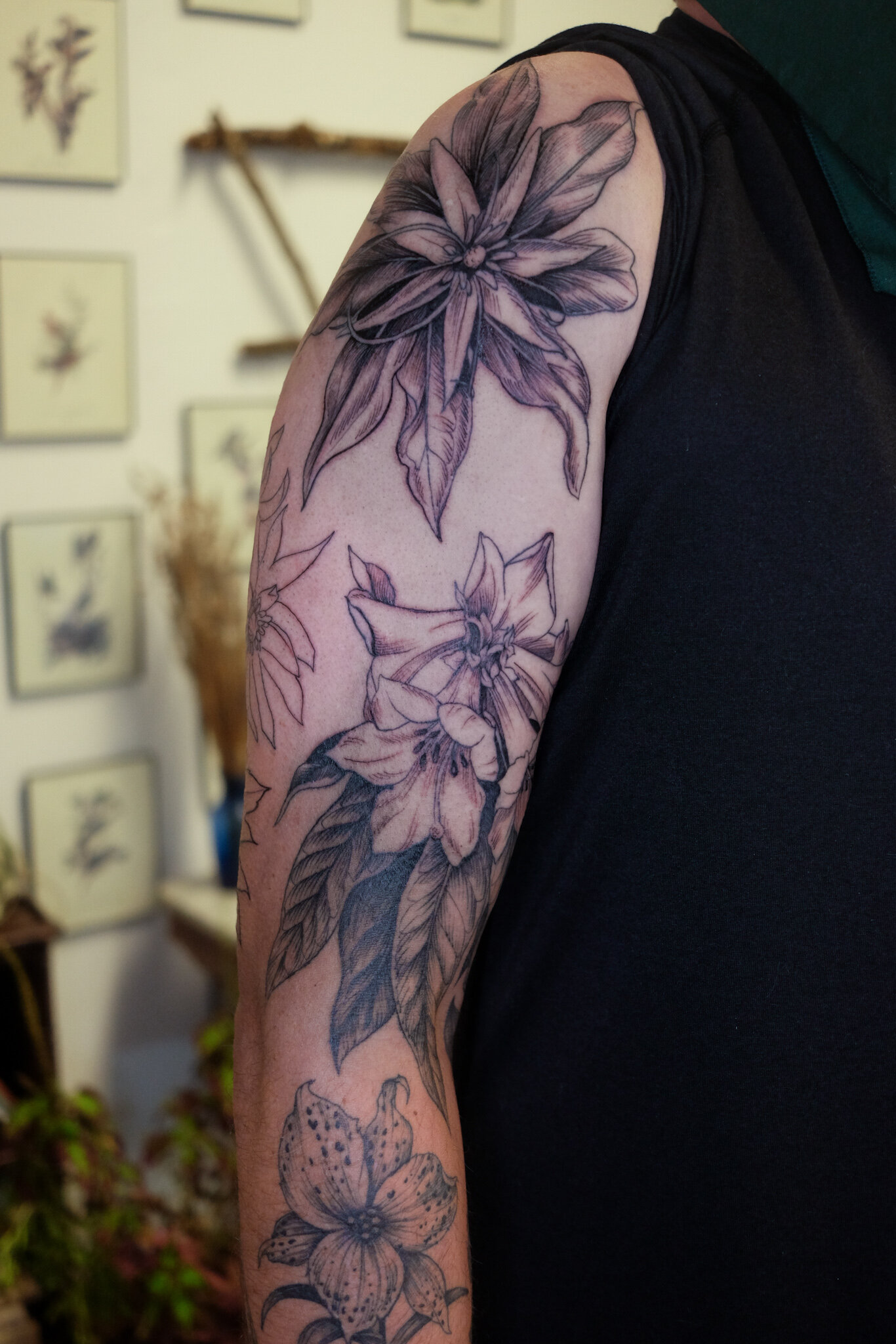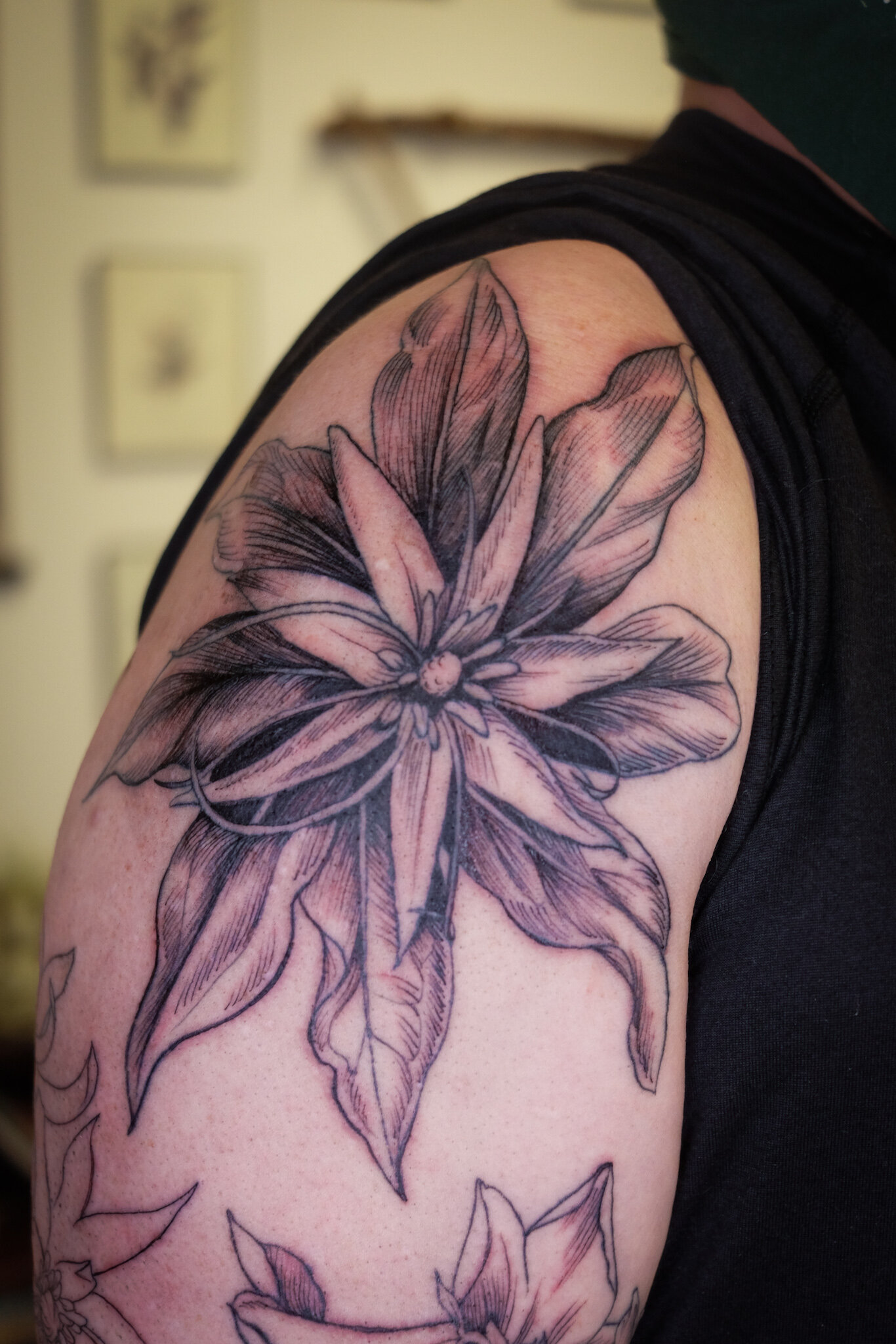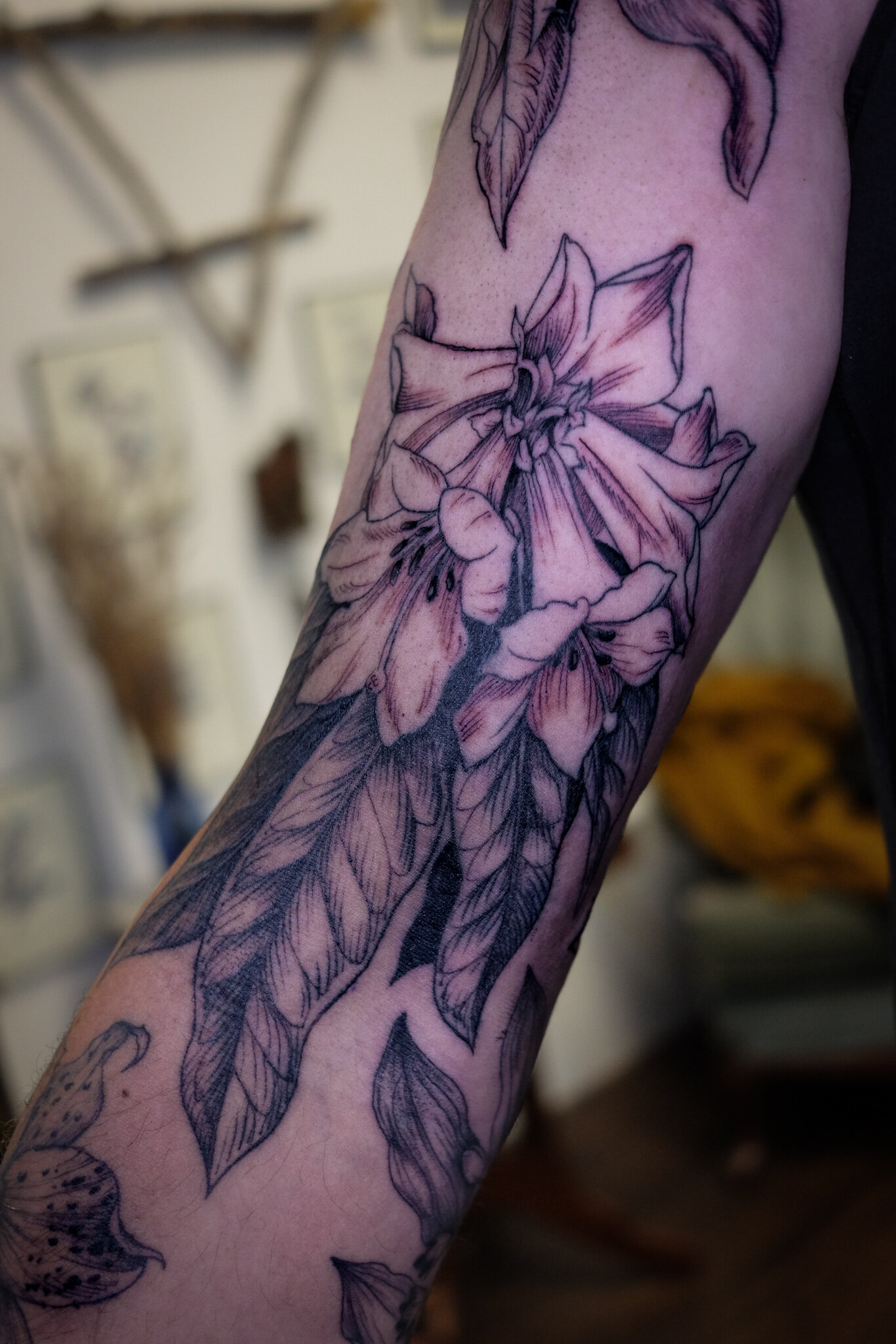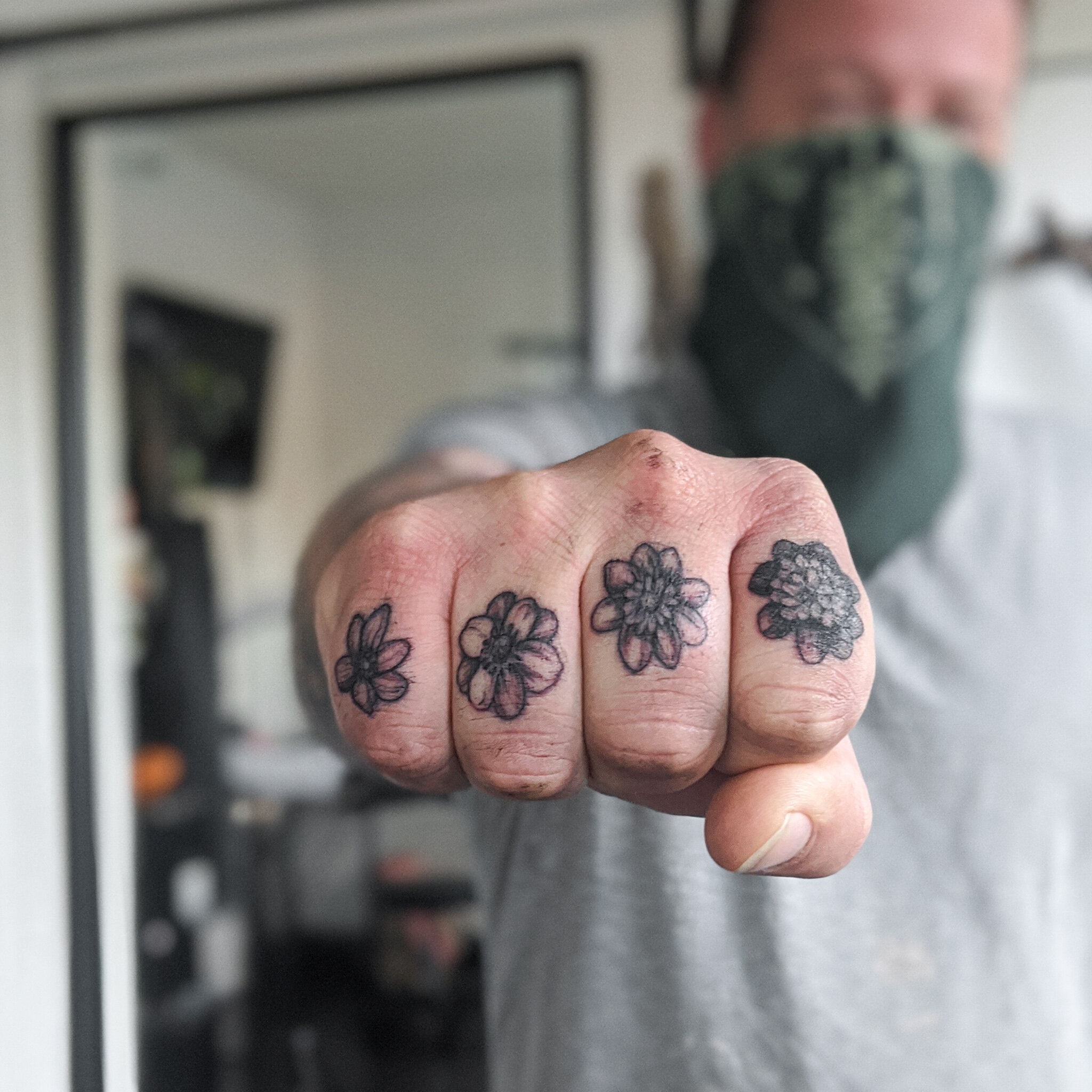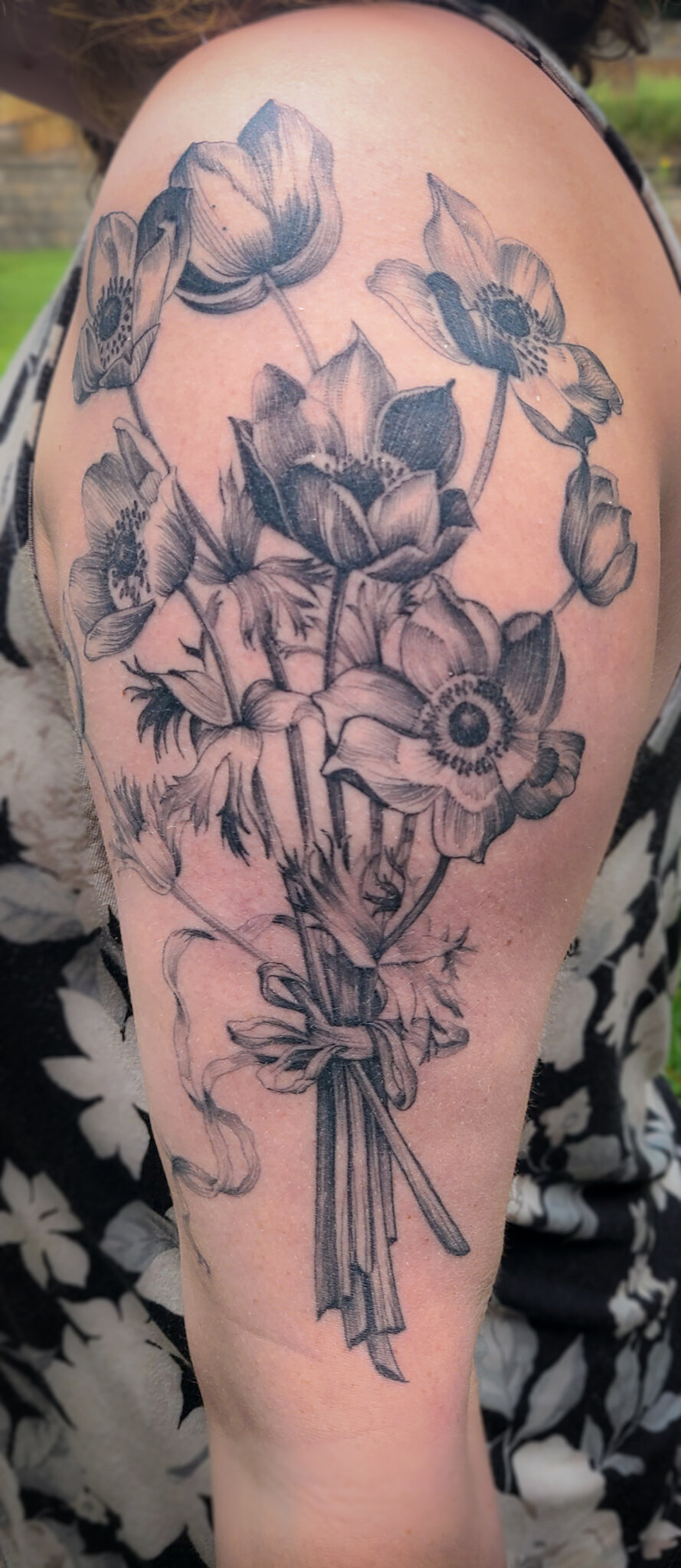Finger tattoos: I love them, but don’t do them often. Fingers are one of the few spots on the body particularly well suited to very small designs. However, if you’ve ever tried to get a finger tattoo, you may have had a hard time finding an artist who will do them. I typically do not offer them to clients that I do not have an existing rapport with, and only offer them on the tops of fingers. (Palm skin is a different story for a different post.) Here’s why:
They will not heal like other skin.
Due to the nature of the flexible and durable finger skin, finger tattoos will very likely experience ink fallout and require touchups. Clients and artists need to be on the same page about expectations and have a touchup plan in place going in.
They will not age like other skin.
For the same reasons, finger tattoos will not hold detail over time like other areas. The level of tolerable detail loss is different for everyone and is a discussion for each client to have with their individual artist.
They are tougher to heal.
Because fingers move around and are touched so much, they can be swollen and/or sore for longer and more prone to infection. Attention to hygiene is key.
They are painful.
There are lots of nerve endings in the fingers. A finger tattoo may be quick, but it will not be comfortable.
Like so many other variables within tattooing,
communication is key.
Having a conversation with the client about what to expect in terms of healing and longevity is the key to everyone leaving happy. For example, A and I have had a conversation about what to expect with these hepatica flowers. They will be seeing me again for more work on their sleeve and knows we will address any necessary touchups then. I’ll keep you posted as these heal!


